





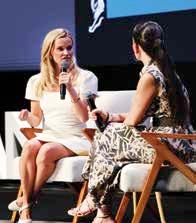








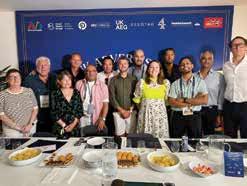
‘Cannes’ we build a better world?
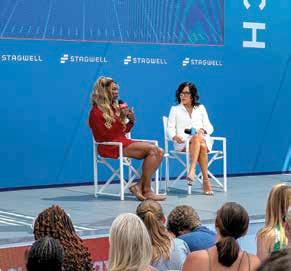
































‘Cannes’ we build a better world?
















Congratulations to our clients and teams for making Cannes 2025 a memorable one, celebrating big brands and creativity that delivers real results and enduring impact.
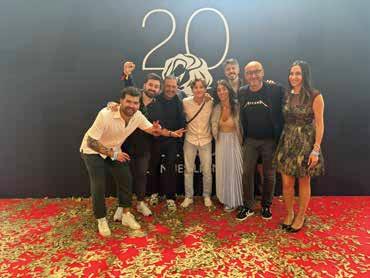

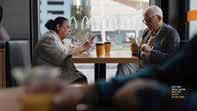
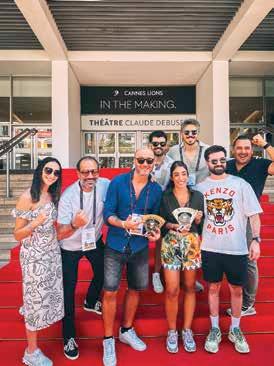

1x Gold
1x Silver
5x Bronze
17 Shortlists
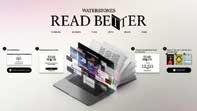

Celebrating global wins in collaboration with: McCann Poland MRM Germany
1x Titanium Shortlist
3x Silver
2x Bronze
Supporting MCN agencies:
“Recipe for Change started as a simple idea, to support women through something as personal and powerful as homemade food. Seeing that idea grow into something recognised on a global stage like Cannes is an incredibly proud moment for all of us. These wins are a reminder that when you lead with authenticity, surround yourself with the right partners, and stay true to your purpose, the impact speaks for itself.”
- Ghida Amhaz - Senior Brand Manager - Arla
“It’s an incredible feeling to see local stories resonate on a global stage such as Cannes. This recognition reflects the kind of work we strive for, ideas that are honest, culturally grounded, and genuinely connect with our audience. That’s what makes it meaningful.”
- Hassan Abouezzeddine – Senior Marketing Director - McDonald's UAE
“Sponsored Balls started as a bold idea, and the fact that it sparked conversation around the world proves how powerful creativity can be when it’s driven by purpose. For a topic that’s often overlooked or avoided, this campaign opened doors, minds, and dialogue. We’re proud to see it recognised at Cannes, but even prouder of the awareness it’s created.”
- Mike Craycraft - Founder and Survivor - Testicular Cancer Society
When brands nudge societal conversations, everyone wins, says Modon Holding’s Dina Jreissati in this month’s

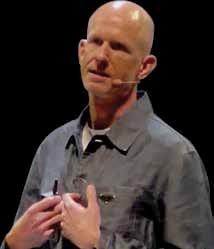
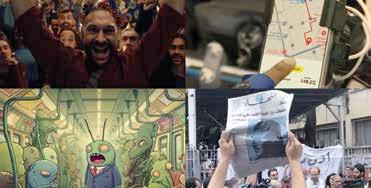
The MENA region had a great run at Cannes Lions 2025, with a total of 32 wins awarded across agencies and markets – up from 22 in 2024 – including work from the UAE, Saudi Arabia and, winning its first Silver Lion, Jordan.
UK Advertising’s Aisling Conlon reveals the UK and Saudi Arabia’s partnership for growth.

Motivate Media Group
Head Office: 34th Floor, Media One Tower, Dubai Media City, Dubai, UAE. Tel: +971 4 427 3000, Fax: +971 4 428 2266. Email: motivate@motivate.ae Dubai Media City: SD 2-94, 2nd Floor, Building 2, Dubai, UAE. Tel: +971 4 390 3550, Fax: +971 4 390 4845 Abu Dhabi: Motivate Advertising, Marketing & Publishing, PO Box 43072, Abu Dhabi, UAE. Tel: +971 2 677 2005, Fax: +97126573401, Email: motivate-adh@motivate.ae
Saudi Arabia: Regus Offices No. 455 - 456, 4th Floor, Hamad Tower, King Fahad Road, Al Olaya, Riyadh, KSA. Tel: +966 11 834 3595 / +966 11 834 3596. Email: motivate@motivate.ae
London: Motivate Publishing Ltd, Acre House, 11/15 William Road, London NW1 3ER. Email: motivateuk@motivate.ae www.motivatemedia.com
EDITORIAL: Motivate Media Group Editor-in-Chief Obaid Humaid Al Tayer | Managing Partner and Group Editor Ian Fairservice Campaign Middle East Editor Anup Oommen | Senior Reporter Ishwari Khatu | Junior Reporter Shantelle Nagarajan | Junior Reporter Hiba Faisal | Group Editor - Arabic Rehab A. Barham
DESIGN: Senior Designer Thokchom Remy | Art Director - Arabic Ahmad Kamal
ADVERTISING ENQUIRIES: Chief Commercial Officer Anthony Milne | Publishing Director Nadeem Quraishi (nadeem@motivate.ae) | Sales Manager Tarun Gangwani (tarun.gangwani@motivate.ae)
PRODUCTION: General Manager S. Sunil Kumar | Production Manager Binu Purandaran | Assistant Production Manager Venita Pinto
HAYMARKET MEDIA GROUP: Chairman Kevin Costello | Managing Director Jane Macken
information contained in this publication which is provided for general use and may not be appropriate for the readers’ particular circumstances. The ownership of trademarks is acknowledged. No part of this publication or any part of the contents thereof may be reproduced, stored in a retrieval system or transmitted in any form without the permission of the publishers in writing. An exemption is hereby granted for extracts used for the purpose of fair review. CampaignMiddleEastincludes material reproduced from the UK Edition (and other editions) of Campaign which is the copyright of Haymarket. Campaignis a trademark of Haymarket and is used under licence. The views and opinions expressed within this magazine are not necessarily those of Haymarket Magazines Limited or those of its contributors.





What’s the raison d’etre of advertising?
Are marketers meant to solve consumer problems, sell products to drive business outcomes or save the world from the troubles plaguing it? Solve, sell or save – this debate had many marketers turning red at Cannes Lions 2025.
“SOLVE,
Several marketers, agency leaders, celebrities and content creators vehemently opined that they are getting paid to help brands acquire and retain customers, and to convince people to spend money on brand offerings. Some of them even went to the extent of saying that “those who want to give back to society must quit marketing and join a nonprofit”. While their advice on how to achieve these brand objectives differed – with some calling for a closer look at cost per click and cost per acquisition, while others pointed to culture, context, creativity, the creator economy and ‘collective intelligence’ – they agreed on the outcome: Boost sales, revenue and profits for the brands that are paying them to do so.
This narrative wasn’t surprising as there were far more brands present at Cannes Lions this year, compared with previous years. Cannes Lions even hosted its first CEO panel in what has historically been a ‘safe space’ for CMOs and marketers.
However, that’s only half the story. Several other global and regional marketers, as well as Cannes Lions jury members, also called for purpose, social impact and ‘marketing for good’. They opined that brands – as well as the stakeholders supporting them – must look beyond profits to also solve problems faced by people and the planet.
Very few raised the million-dollar question: Do profits and purpose need to be mutually exclusive? Can we not serve consumers with products they need while still solving problems that the global population is facing? Despite the over-rotation on outcomes, profits and return on investment, the top spot on the podium went to human emotion and human ingenuity. Many of the Grand Prix winners were chosen because they not only achieved business goals for brands, but because they also resonated on a human level through humour and a demonstrated social impact.
And this is where creativity and artificial intelligence (AI) – words repeated every 30 seconds at the festival – fit into the conversation. If creativity is the hand that curates the campaign, then AI is the glove that packs the punch while delivering on the promise of profits and purpose … if done right. It’s best not to go down the DM9 route of being stripped of a Cannes Lions Grand Prix because AI-generated content was used to simulate campaign outcomes.
The irony is not lost on me that this edition of Campaign Middle East was intended to focus on ‘ethical and do-good marketing’ while wrapping up key take aways from Cannes Lions 2025.
We haven’t taken sides. We continue to be a mouthpiece for all opinions within the marketing realm. Happy reading.
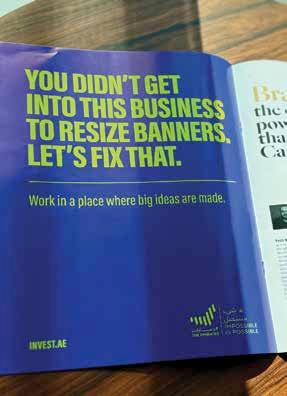
For the second year in a row, the UAE Government Media Office has attracted incredible attention at the Cannes Lions International Festival of Creativity. Several hundred delegates, attendees and passers-by were seen raising their phones to scan the QR Code on a massive billboard that read: “An ad without a logo. There’s only one country that would do something that risky.”
Ethara, an events and entertainment company, has appointed The Romans as its lead PR agency.
The multi-year retainer includes work streams across corporate brand, live events, venues – such as Yas Marina Circuit, Etihad Park and Etihad Arena, among others – and the Formula 1 Etihad Airways Abu Dhabi Grand Prix.
Following a nationwide competitive pitch, The Romans said that it bagged the six-figure partnership due to its reputation for dynamic communications strategies. The move also reflects Ethara’s vision for future growth.
“As Ethara continues to grow in an increasingly competitive industry, elevating our brand and deepening engagement with our diverse audience segments remains a strategic priority,” said Andrew Stass, Brand Marketing and Communications Director, Ethara.

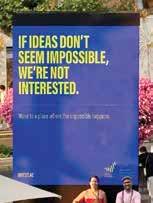
Positioned perfectly at the busiest entry points within the heart of the Palais, and on the glass façade overlooking the Croisette, these billboards played on the inherent curiosity of the global creative, brand, marketing and advertising industry. Several similar billboards located within the Palais also drew eyeballs. Campaign Middle East overheard conversations about the ‘bold’ and
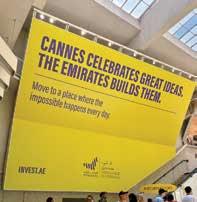
‘disuptive’ ads from those who stood looking at these billboards while waiting patiently in long queues – in hopes of laying eyes on global celebrities such as tennis superstar Serena Williams, comedian Jimmy Fallon, and Hollywood actress Reese Witherspoon.
Commenting on the campaign, Khaled AlShehhi, Executive Director of Marketing and Communication at
the UAE Government Media Office, said, “The UAE Government Media Office returned with louder confidence and sharper intent, taking over the Palais and the Croisette with bold, pointed headlines that did more than catch the eye.”
He added, “The strategically placed outdoor and indoor billboards didn’t ask for attention. They earned it. But beyond scale or design, it was the tone that turned heads: not promotional, not ceremonial, but culturally fluent. They were made for the creative crowd, by a country that now speaks their language fluently.”
With an approach that included out-of-home (OOH) static billboards, digital-out-of-home (DOOH) billboards, and indoor billboards, the campaign, created in collaboration with Impact BBDO, was also rolled out across some print publications.
The campaign also closed the loop on ‘Bring Your Impossible’ – The platform launched by the Emirates at Cannes Lions 2024.
What began as a campaign has since evolved into a narrative that continues to unfold; a narrative that calls on creators, founders and thinkers to go beyond ambition and move into execution.
“We didn’t come to Cannes to be seen,” AlShehhi said. “We came to be part of the conversation on the stage, in the jury room, and on the streets. Our message is simple: if you have an impossible idea, you’ll find your partner in the Emirates.”
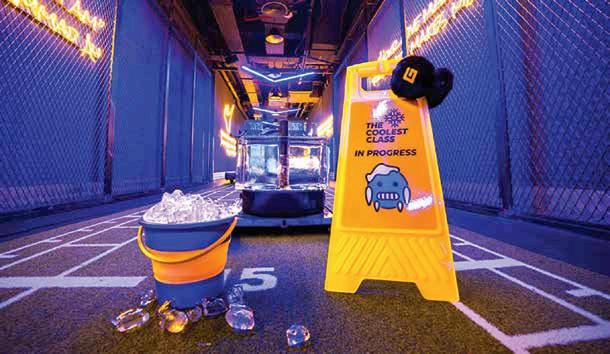

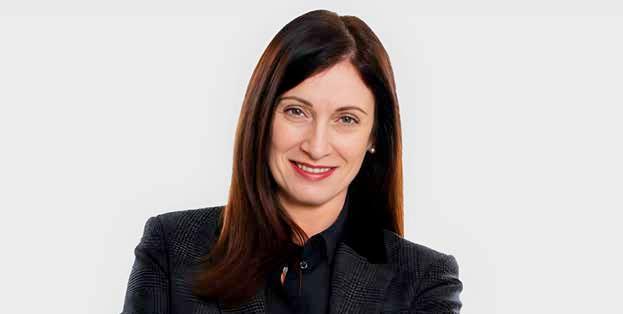
WPP has chosen Cindy Rose, currently a senior executive at Microsoft, to replace Mark Read as CEO.
Rose will take over on 1 September and already knows the British agency group well because she has been a non-executive director on WPP’s board since 2019. She is currently Chief Operating Officer – Global Enterprise at Microsoft, where she has worked for nine years. She has held the COO role for three years and, previously, was President of Microsoft Western Europe and CEO
of Microsoft UK. Prior to that, she worked at Vodafone, Virgin Media and Disney. Rose is a lawyer by training and has not actively worked in agencies.
Microsoft and a number of her past employers are WPP clients.
Rose, who has been honoured with the Order of the British Empire (OBE), holds both British and American citizenship. WPP said she will be “based in both London and New York” – a significant dual location given WPP’s under-
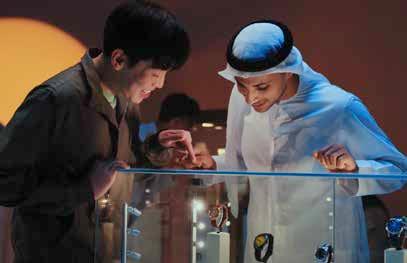

Luxury retailer Ahmed Seddiqi launches its refreshed brand along with its 75th anniversary campaign in the MENA region. Brought to life in collaboration with directing duo Simon Morehead and James Hulbert from Sovereigns, Director of Photography Mark Hobz and Art Director Maria Fontela, in partnership with Create Group, the hero films aim to reflect the timeless values and modern ambitions of the brand. As Ahmed Seddiqi adds new luxury brands to its portfolio, the campaign intends to capture the energy of transformation while maintaining reverence for the legacy built since 1950. Create Group’s scope included film production, digital assets, in-store branding, social media strategy, and more.
Dubai Airports has appointed Current Global MENAT as its strategic public relations agency, following a highly competitive pitch review.
As the operator of Dubai International (DXB) and Dubai World Central (DWC) – Al Maktoum International Airport, Dubai Airports will partner with Current Global on integrated campaigns, and proactive media engagement.
performance in North America in recent years.
Commenting on the appointment, Rose said, “WPP is a company I know and love – not only from my six years on the board but as a client and partner for many years before that – and I couldn’t be happier or more excited to be appointed as CEO. I began my career in the creative industries and this feels like coming home.”
Rose will become the third CEO and first woman to lead WPP.
“As Dubai Airports transforms into a hospitality-driven organisation, we need to move to a more agile, digitally-driven and integrated marketing and communications approach that makes the most of the latest tools, technologies and thinking,” said Michelle Lee, VP Brand and Communications, Dubai Airports. “Working alongside our existing MCN partners, Current Global will help us deliver truly integrated internal and external communications through impactful and innovative storytelling, with earned media at the centre.”
Dubai Airports also aims to amplify its ‘culture ambition’ and refreshed corporate strategy. This strategy will be aimed at enhancing employee engagement and experience, and aims to align with Dubai’s D33 agenda.


This 360-degree campaign marks the expansion of Careem Pay’s international remittance service to more than 30 corridors. Aiming to be a bold departure from traditional financial advertising, the campaign’s design deviates from typical financial visuals and, instead, uses sharp sound design to highlight the speed and better rates of Careem Pay services. Associating dynamic sounds such as ‘Vroooosh. Ding.’ and ‘Ping. Ping.’ with Careem Pay’s financial services, the campaign focuses on two core customer concerns: how fast money lands into an account, and how money reaches loved ones abroad. Careem took a human- and sound-led approach to the campaign’s design to create a lasting sonic memory.
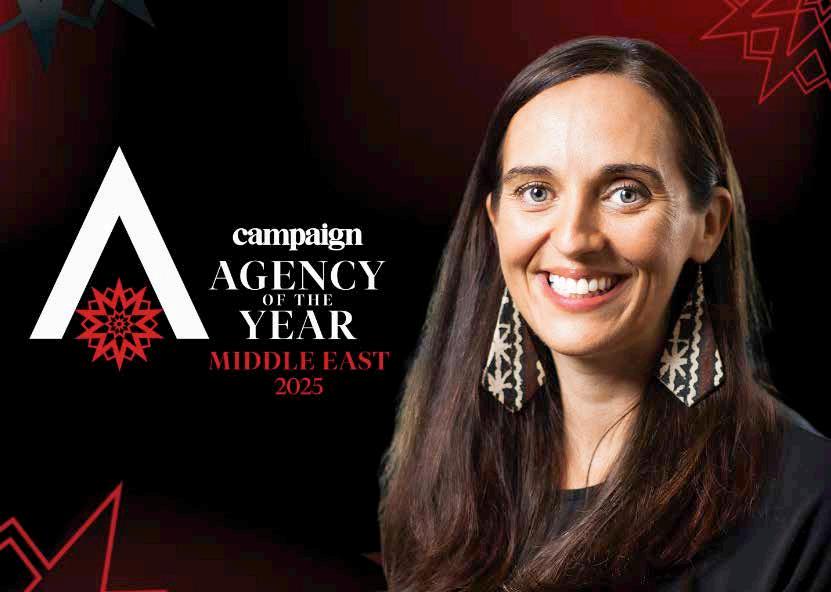
Department of Culture and Tourism (DCT) – Abu Dhabi’s Emma Campbell has been named Chair of judges for the 2025 edition of Campaign‘s Agency of The Year Middle East (AOTYME) awards. With more than 20 years of experience across various sectors, Campbell currently leads Sector Marketing for Tourism and Culture at DCT Abu Dhabi, where she develops and executes strategic marketing initiatives to promote the emirate’s tourism and
cultural offerings to global audiences. Commenting on the AOTYME Awards as Chair Judge, Campbell said the true strength of the awards lies in its recognition of regional agencies’ hard work –backed by business outcomes. She said, “I think these awards are really important because they cut through all the noise in a busy market and highlight agencies that are genuinely delivering – both creatively and in terms of business results.”
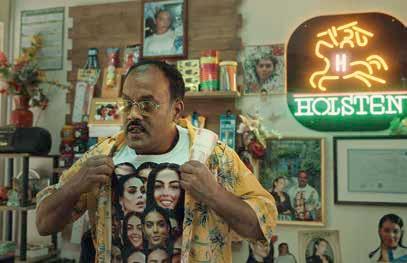

The Carlsberg Group’s premium malt beverage Holsten partnered with social media personality, model and entrepreneur Georgina Rodríguez for its latest advertisement. Set in a neighbourhood baqala in Saudi Arabia run by ‘Rajeev’, the video plays up a rumour that Rodríguez visits the baqala every Monday to pick up her ‘favourite treat’ – a bottle of Holsten. The audience-first campaign was designed specifically for Saudi Arabia with deep cultural relevance and local consumer insight with the intention of reinforcing Holsten’s brand positioning within the Saudi market. The multi-platform campaign has been rolled out across Shahid, social media channels, cinemas and outdoor advertisements.

Leading up to the awards ceremony in December, Campbell will head the jury panel of top-level marketers in the region.
As Chair Judge, Campbell said she looks forward to seeing “the full package” from agency entries this year. “It’s not just about the work itself, but about how agencies are growing financially, meeting strategic goals, and supporting their people along the way,” Campbell explained. “Agencies that focus on diversity, inclusion and sustainability also stand out here.”
“Judges want to see clear evidence of financial growth and business success, including revenue increases, profit margins and market share gains. It’s about telling the story with solid data. Culture matters too: low staff turnover, strong employee engagement and meaningful diversity initiatives are key,” Campbell added.
According to her, the best entries will be ones that show a “well-rounded, strategic and resultsdriven agency”.
She said, “Innovation should be front and centre, with clear examples of how new technology or approaches delivered measurable benefits. And, of course, client partnerships need to shine, backed up by satisfaction scores and real testimonials.”
The 2025 AOTYME awards come at a pivotal time of change within the industry, when advancements in technology and changing consumer behaviours have led to drastic shifts in how agencies operate.
“What’s really exciting is how the region is blending global marketing trends with a unique local flavour,” Campbell added.
Award entries can be submitted at a discounted rate until the early bird deadline of 7 August 2025 on the aoyawardsme.com website. Winners will be revealed at an awards ceremony in December 2025.
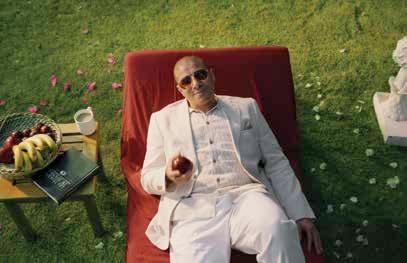
Tie House, a men’s fashion brand based in Egypt, has launched a campaign featuring former professional footballer Mohamed Zidan to celebrate its 30-year anniversary. The campaign shows Zidan taking on several everyday characters with subtle visual transformations, to depict how Tie House suits all lifestyles, from celebrity to everyday living. The campaign was launched with an integrated 360-degree approach to ensure strong brand recall across various segments. Adopting a humorous tone, the campaign’s core challenge was finding the balance between comedic undertones while maintaining Tie House’s elegant brand positioning.
Can the numbers shown to clients on programmatic be trusted?


Rohan Sawant Head of Programmatic at Platformance
We need to move beyond the tired ‘black box’ excuse. Today’s ecosystem offers tools to validate both performance – impressions, reach and click-through rate (CTR) – and quality –viewability, invalid traffic (IVT) and brand safety - with precision. Programmatic guaranteed gives direct access to premium inventory. Curation platforms are transforming how we activate data rich, high-attention private marketplace (PMP) deals. Infrastructure is no longer the issue. The challenge lies in settling for convenience over clarity. Trust is not a feature; it’s a decision. It starts with asking harder questions and demanding better answers.
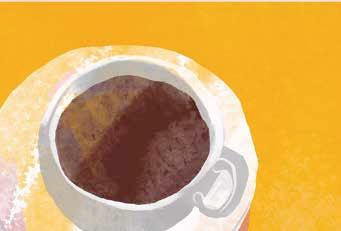
Bachir Zeidan Head of Digital Media Services, BPN MENA
The numbers we show clients on programmatic can be trusted but only if we’ve taken the right steps. That means working with verified partners, using transparent supply paths and applying strong brand safety filters. However, not all inventory is created equal. Some platforms still allow for inflated impressions, hidden fees or misleading placements.
So, while the data is often accurate, it’s on us to dig deeper, ask the right questions and push for accountability. Trust doesn’t come from the platform alone – it comes from how we manage, audit and explain the data to our clients with honesty and clarity.
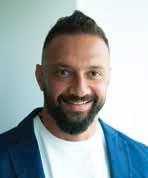
Khaled AlShehhi Executive Director of Marketing and Communication, UAE Government Media Office
NODespite advances, most programmatic numbers shown to clients still can’t be fully trusted. The supply chain remains cluttered with intermediaries (demand-side platforms, supply-side platforms and exchanges), each adding complexity and cost. Metrics are often modelled, not measured. Walled gardens limit visibility. Even third-party verification tools have blind spots, especially when it comes to actual media quality, placement context and human attention. Without access to log-level data and independent audits, clients are left with a polished version of reality, not the full picture. Until the ecosystem delivers true end-to-end transparency, trust remains conditional. And that’s the issue: in programmatic, you don’t just buy impressions; you inherit uncertainty.

Sruti Sreekumar Strategy Manager, Boopin
The numbers can be trusted, but the way we use and present them today isn’t enough. One of the biggest issues is that programmatic reporting is still treated like standard social reports. We focus on surface level metrics –impressions, clicks, views without unpacking their true contribution to business outcomes.
Clients are more interested in how programmatic contributes to the bigger picture: What role did it play in the conversion journey? What uplift did it drive in brand awareness or consideration? Was the inventory high-quality, viewable and brand-safe?
The data already exists –viewability, attention scores, brand lift studies and attribution paths – but we are just not surfacing it enough. So yes, the data can be trusted. But it’s on us to move from reporting metrics to revealing value.
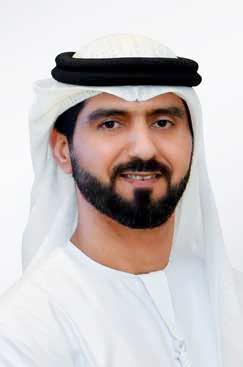
Hicham Dergham
Regional Sales Director, DXTA Technology
They can be trusted, when transparency is built into the technology. In my work across the region, I’ve seen that trust in programmatic is built through a combination of real-time analytics, third-party verification and precise audience measurement. When campaigns are backed by AI-powered dashboards and integrated DSPs, clients can track performance metrics from impressions to viewability, with full transparency.
It’s not just about showing numbers, but ensuring those numbers are accurate, consistent and explainable, with no discrepancies.
Especially in fast-growing digital markets, it’s this level of accountability and insight that transforms data into trusted, actionable intelligence.
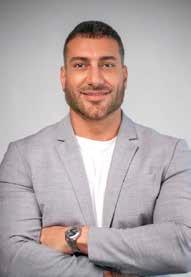
Azzam Khan Media Manager, 5th Element
Programmatic numbers can be trusted – when we commit to full transparency. With clear data, open reporting, and honest fee structures, clients know exactly where their money goes and what impact it delivers. There’s no room for guesswork or hidden layers. When done right, programmatic is not just measurable, it’s fully accountable and truly powerful. Trust isn’t a nice-to-have; it’s the foundation of great partnerships.

Akl Director - Integrated Planning Media, UM Kuwait
While programmatic metrics presented to clients are generally reliable within certain parameters, their accuracy fundamentally depends on establishing robust measurement frameworks. The programmatic environment is inherently complex, introducing risks including transparency gaps, ad fraud, and inconsistent inventory quality.
True success in programmatic campaigns isn’t measured by data collection alone, but by identifying, prioritising and leveraging the most relevant data that aligns with business objectives and making informed decisions based on these insights.
Relying on surface-level metrics with single tracking methods leaves campaigns vulnerable to inefficient spending and suboptimal performance. Strategic data management, incorporating layered tracking and thorough analysis remains essential for programmatic success.
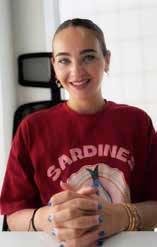
Mohammad Basma Head of Programmatic and AdOps, Assembly Global
YESIn a space as complex and fast-evolving as programmatic, it’s our job to bring clarity and confidence.
Clients may not always be familiar with the platforms behind programmatic. But its sustained growth and the rise of formats like connected TV and digital-out-of-home reinforce its longevity. For optimum transparency, the below are critical:
• Attribution accuracy via Campaign Manager 360
• Brand safety using tools like DoubleVerify
• Transparent reporting from trusted global DSPs

Our expertise is built around creating ad environments where numbers mean more, learnings come fast, and clients see the evidence they need to make informed decisions.
When we consider the major forces shaping young minds, entertainment stands alongside education and family. For children, animated stories and characters aren’t just enjoyable – they are influential. They become trusted companions, emotional reflections, and even early guides to understanding how the world works. And in a world where the climate crisis is no longer a distant threat but a daily reality, kids’ entertainment now has a powerful new role: not just to entertain, but to empower.
Climate action can seem daunting, even for adults. However, children bring a unique lens to the table, one filled with curiosity, hope and a refreshing sense of fairness. They want to help.
‘‘CHILDREN’S ATTENTION SPANS MAY BE SHORT, BUT THEIR MEMORIES ARE LONG.’’
The challenge isn’t motivation; it’s connection. How do we speak to them in ways that are culturally relevant, emotionally resonant, and age-appropriate?
At first glance, climate consciousness might seem like a heavy theme for children’s media. But when woven into storytelling with creativity and care, it becomes one of the most powerful tools we have and not only for building values but for building trust. And that trust is where brand value begins.
WHY THIS MATTERS TO BRANDS
Millennial and Gen Z parents are increasingly valuedriven, and they expect the same from the brands they welcome into their homes.
According to Nielsen, 73 per cent of global millennials are willing to pay more for sustainable products, and 81 per cent expect companies to make meaningful environmental improvements.
When their children engage with content that promotes sustainability and responsibility, this engagement reflects on the brands that choose to show up in that space.
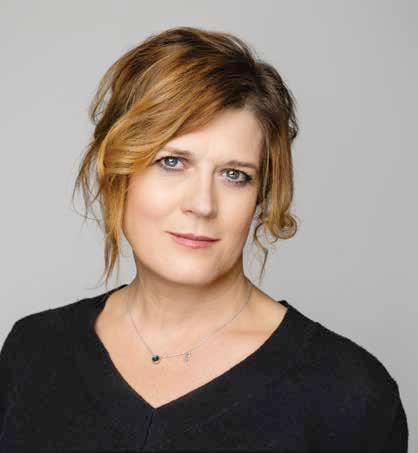
In kids’ media, the opportunity is unique: content is often co-viewed, discussed at dinner tables and translates into real-world behaviour. Brands that place themselves thoughtfully in this environment aren’t just buying impressions, they’re becoming part of meaningful family dialogue.
Climate-conscious programming doesn’t just align with a cause, it delivers cultural relevance, emotional depth and long-term loyalty.
When a major entertainment network partners with an environmental group, the result isn’t just awareness – it’s action. Think: Water Week, social media challenges and storylines that blend fun with real-world impact. These aren’t just campaigns – they’re invitations for kids to get involved.
We have brought climate subjects into storylines in ways that feel playful, accessible and empowering, turning climate awareness into something tangible, repeatable and positive.
Whether it’s e-waste awareness with Envision Racing in the Europe, the Middle East and Africa (EMEA) region or tree planting with the Emirates Environmental Group in the Middle East and North Africa (MENA) region, these collaborations highlight how storytelling can make sustainability feel exciting and achievable. With more than 16.1 million digital impressions, results show that we were able to use familiar faces to deliver important messages. And for brands that align with content promoting meaningful action? They’re remembered not just for their products but for what they stand for.
Children’s attention spans may be short, but their memories are long. The associations they form now, between characters they love, and the
Warner Bros. Discovery’s Monika Oomen shares how brands can inspire eco-action in young audiences through kids’ media and entertainment.
values they absorb, will shape how they see the world and the brands in it for years to come.
Generation Alpha is already showing signs of being ethically motivated. Brands that engage them early through value-driven media are investing in long-term relevance.
And parents are paying attention, scrutinising where and how their children engage with media. What is this show teaching my kid? What does this brand believe in? Supporting climate-conscious content is one of the clearest signals a brand can send that it understands the bigger picture and respects its audience’s values.
The message is clear: from cartoons to causes, entertainment is evolving. And the brands that evolve with it – those that choose to empower, not just to entertain – will be the ones that build trust, loyalty and lasting value.
Because in the end, children don’t just watch what we show them. They learn from it. And brands that choose to be part of that learning journey? They’re the ones that stay with them.
By Monika Oomen, VP Brand, Communications and Digital Content Strategy, Kids EMEA at Warner Bros. Discovery.

Marwa Kaabour reflects on how Al Masaood’s journey toward ethical leadership weaves sustainability, inclusion and governance into the fabric of business.
What does it mean for a business to care? For Al Masaood, the answer has unfolded over five decades. Not through words alone, but through a legacy of action rooted in responsibility.
From Abu Dhabi’s first Chamber of Commerce registration to becoming a diversified industrial group championing clean energy, ethical governance, and community investment –this is a story where doing good isn’t a side initiative. It’s the business itself.
CREDIBILITY GROWS THROUGH TRANSPARENCY AND COMMITMENT
Our sustainability journey is driven by a belief that long-term credibility demands more than ambition. It requires alignment, transparency, and a culture of reflection.
For example, take our response to the UAE’s Net Zero by 2050 initiative and Vision 2030. Instead of just pledging environmental stewardship, we embedded real values across our divisions – from striving for a plastic-free work environment at the corporate level to going paperless at Al Masaood Automobiles showrooms. In line with Abu Dhabi Environment Vision 2030, Al Masaood Automobiles has successfully reduced its annual waste output to under 250 tons and maintains a minimum 20 per cent recycling rate each year, while also minimising air pollution and noise levels in our workshops. When Al Masaood says it’s committed to sustainability, that commitment can be felt in biodegradable bags, solar retrofits, energy-efficient lighting, and waste diverted from landfills.
For us, sustainability is a mindset that transforms everyday decisions into opportunities for purpose. This approach is reflected in initiatives like distributing reusable bottles through our “Think. Act. Save.” campaign, launching the ‘We Are Responsible’ movement to promote sanitisation and wellbeing during the pandemic, embedding ethical standards into every supplier relationship and earning the Corporate Ethics Mark from CIPS, among many more. When customers, employees, or partners see this consistency, it creates trust. And trust builds loyalty.
A new generation is watching closely – and Al Masaood is listening. Gen Z’s values are deeply rooted in transparency and ethics. That’s why our CSR strategy focuses on genuine impact such as community engagement during Ramadan, breast cancer awareness campaigns, health webinars, and employee empowerment through mental wellness, diversity, and inclusion. Al Masaood has forged a strong alliance with the Abu Dhabi Sports Council (ADSC). Together, we support major sporting events in the capital, promoting Abu Dhabi as a leading international sports hub. Such efforts reflect a company growing alongside a society that demands authenticity.
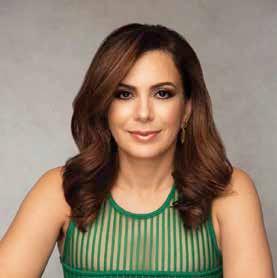
The heartbeat of any brand is its people. That’s why we invest in learning, development, and a values-driven culture. With thousands of training hours logged in 2024, career development for Emirati youth via Tawdheef, and inclusive hiring that celebrates cultural diversity and gender equity, we ensure our internal compass points to the same North Star as our external commitments.
ETHICS DRIVE ECOSYSTEMS, NOT JUST BRANDS
The impact of purpose isn’t limited to the customer. It ripples across supply chains and strategic alliances. Partners, vendors, and even investors calibrate their confidence based on trust signals. Al Masaood’s ethical procurement, ISO-aligned compliance frameworks, and supplier codes of conduct have helped us become a trusted name not just for what we sell, but for how we operate. That’s how trust becomes a competitive edge – quiet, but powerful.
SUSTAINABILITY AND PERFORMANCE ARE NOT OPPOSITES
Too many still treat sustainability and profitability as trade-offs. Al Masaood sees them as allies.
From the introduction of Euro 5 compliant trucks that reduce emissions, to the adoption of sustainable innovation, we continue to scale smartly. Future-proofing our business and expanding resilience extends beyond carbon neutrality. For us, this includes the introduction of electric commercial vehicles such as Dongfeng and Renault Trucks E-Tech Electric Truck, the first electric waste management trucks in the region.
FUTURE BELONGS TO CONSCIOUS BRANDS
In the marketing industry, branding was a matter of image or messaging. Now it lives in the decisions a company makes each day – in what it builds, how it treats people, and the impact it chooses to have. For brands that act with care and consistency, credibility grows gently over time. It’s earned in the details, not just declared in headlines.
Stakeholders today are asking smarter questions. They’re looking beyond statements to see how values show up in practice. So, the goal is not to appear perfect but to be clear, accountable, and willing to improve.
Part of that work is knowing what’s working and what’s not. Therefore, measurement brings purpose into focus. When companies track what they claim to value – whether it’s emissions, equity, or engagement – they give their commitments weight. It makes trust possible. That’s why Al Masaood has set an exciting goal of applying pertinent standards for more structured disclosures and key performance indicators as part of our future reporting cycles.
For brands, what matters now is not saying more, but proving more – clearly, repeatedly, and without compromise.
By Marwa Kaabour, Group Head of Marketing and Corporate Communication, Al Masaood

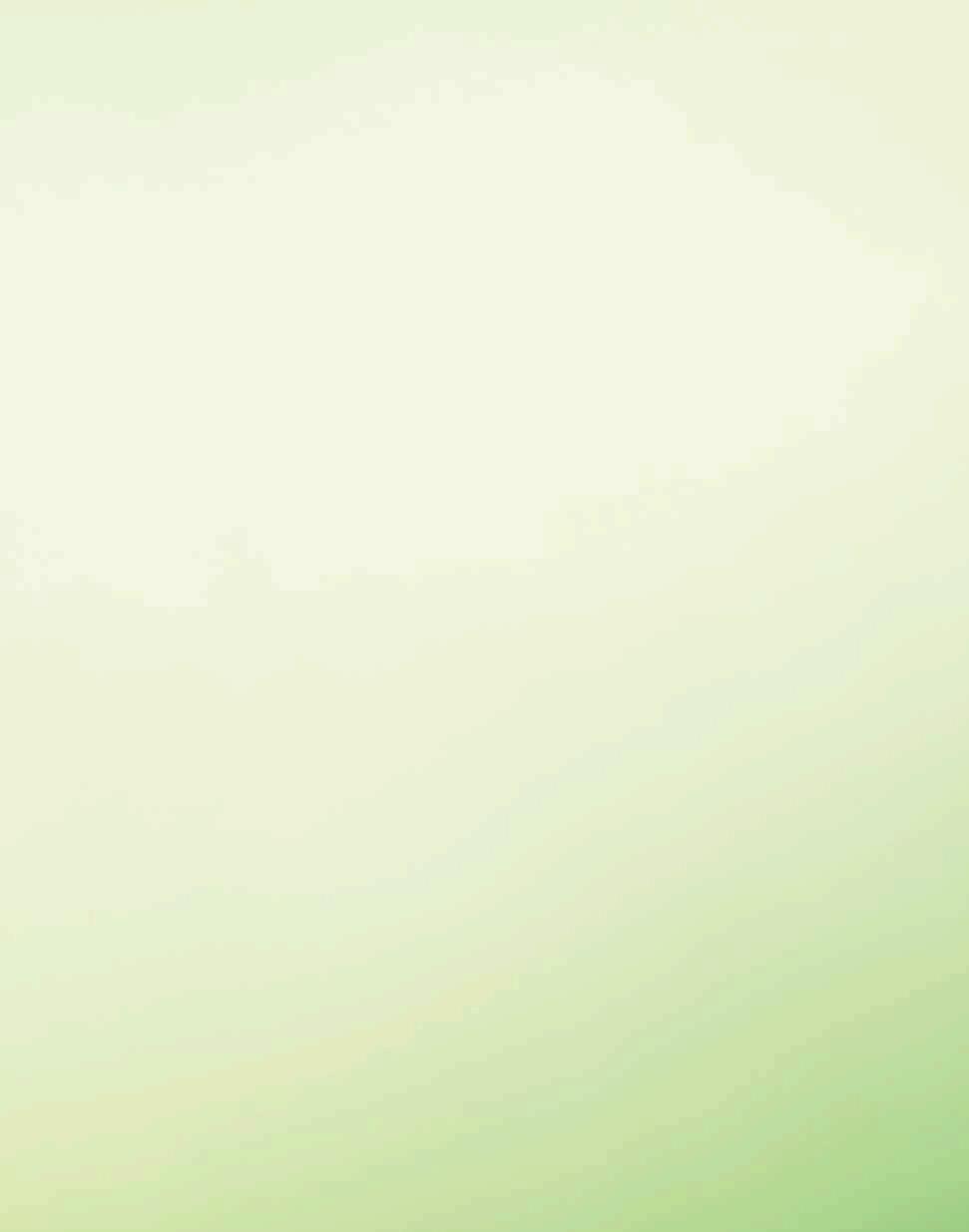
Picture this: you’re in a retail store, standing in front of a shelf stacked with products. To your left, a beauty product promises natural, organic and/or sustainably sourced ingredients, recyclable packaging, and contributing to a better future. Just a few steps away, a conventional alternative tempts you with a discounted product. In that moment, the decision isn’t just about environmental ideals – it’s a balancing act between good intentions and the practicalities of everyday life.
For many consumers, especially in a region where the majority of everyday essentials are still bought in-store, this moment is critical. This raises an important question: are we overlooking one of the most powerful levers for driving real change?
THE AISLE AS AN UNTAPPED PLATFORM FOR PERSUASION
While 50 per cent of global consumers say sustainability is a top purchase criterion, Bain & Company research shows that
Unilever’s Manan Gupta shares why the retail shelf is one of the biggest missed opportunities in consumer sustainability.
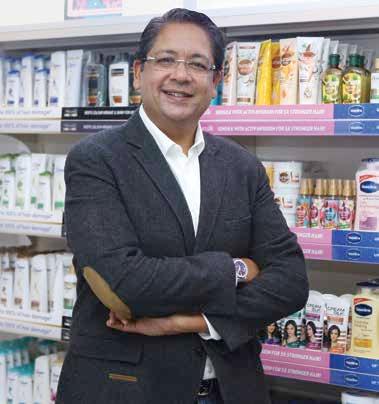
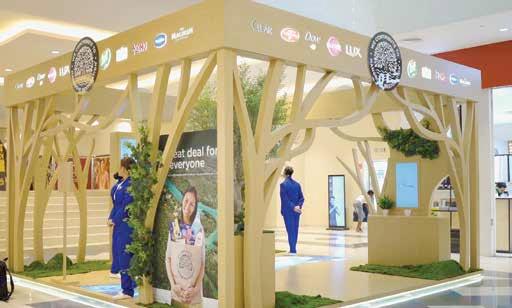
many struggle to identify sustainable options. When asked to compare the carbon footprints of two products, 75 per cent either answered incorrectly or didn’t know. If sustainability isn’t clear at the shelf, good intentions won’t translate into action.
The challenge goes beyond awareness – it lies in the friction at the point of decision. Consumers encounter mixed messaging and ambiguous claims, while everyday purchase factors often steer them toward familiar options, even when they aspire to greener choices.
Sustainability needs to be positioned not as an extra effort, but as the easy, intuitive, and even preferable choice. Brands and retailers have the power to shift behaviours where they matter most: at the point of purchase. Small changes can drive big results: Drive behaviour change through rewards: Such as price incentives or temporary discounts on sustainable products to make them more attractive while building a habit.
Social proof: Signage indicating that a significant percentage of shoppers have chosen an eco-friendly product can influence others to follow suit. Communication, education, and interactive experiences: Clear, concise messaging at the shelf, coupled with QR codes or digital displays providing real-time information on a product’s environmental impact, can engage and inform consumers.
Simple adjustments such as strategic product placement, clear environmental, social and governance (ESG) messaging, and interactive educational displays can serve as behavioural nudges, guiding consumers toward more sustainable choices.
Retail environments hold untapped potential. Consider this: a McKinsey study found that products with clearly communicated ESG claims have grown
faster than those without. In the UAE, where in-store grocery shopping remains dominant, these insights are being put into practice. In late 2024, Unilever launched a nationwide initiative called ‘A Great Deal for Everyone’ in partnership with LuLu Group, Emirates Nature – WWF and Mastercard.
The campaign ran for four weeks across major cities Dubai, Abu Dhabi and Al Ain and linked everyday purchases to tangible environmental impact through the restoration of 6,000 mangroves. It combined price offers on products with sustainability credentials, with shop-andwin promotions, radio competitions and digital engagement. A dedicated educational activation at LuLu Hypermarket in Al Barsha, Dubai brought the initiative to life, turning a routine shopping experience into an opportunity to learn about mangrove ecosystems and their role in climate resilience.
The objective was simple: to reduce the friction consumers face in making sustainable choices by combining affordability, visibility and meaning. The results speak volumes. Nearly 67 per cent of shoppers reported that in-store interventions helped them choose more sustainable products, and 65 per cent felt empowered knowing their purchases contributed to environmental efforts. This translated into a 12 per cent year-on-year uplift in sales across sustainable products, with a 13 per cent increase compared with previous months proving that sustainability resonates when it is made accessible and actionable.
The aisle isn’t just where purchases happen; it’s where product discovery and consumer education take place. For sustainability to become the default, it must be effortlessly discoverable, clearly communicated, and compelling on the shelf. The opportunity is right in front of us. The question is, are we ready to take it?
By Manan Gupta, GM – Beauty and Wellbeing, Unilever –Middle East, Turkey, Pakistan and Bangladesh
C2 Comms’ Roy Aftimos shares how the agency is fuelling competitive advantage by prioritising people and purpose.
While the industry debates purpose, we decided to live it.
Not through manifestos or mission statements, but through something far more radical: Policies that actually put people first. Because here’s what we’ve learned after years of building campaigns about human connection, you can’t authentically sell what you don’t genuinely practice.
Traditional agency governance follows a predictable pattern: Maximise billable hours, minimise operational costs and maintain industry standards. It’s efficient. It’s profitable. And it’s exactly why talented people burn out and brilliant ideas never see daylight.
We chose a different path. One that started with a simple question: What if we designed our workplace around human flourishing instead of human endurance?
The answer led us to policies that industry peers called ‘unrealistic’ and ‘unsustainable’. Today, those same policies are driving our most award-winning work and our strongest client relationships.
In our region, there are statutory minimums when it comes down to personal time off. For us, birthday leave isn’t just about giving people their special day off, though we do that. It’s about recognising that personal milestones matter as much as project deadlines. When someone feels valued as a human being, not just a resource, their creative output transforms.
We also believe in what we call ‘green leave’, time dedicated to causes that matter to our people. It’s not about ticking corporate responsibility boxes; it’s about understanding that when our team connects with purpose beyond our walls, they bring that energy back into everything we create. The designer who spends time with environmental causes brings fresh perspective to sustainability campaigns that no brief could ever capture.
Sabbatical leave though, might be our boldest move yet. After three years, two weeks paid. After five years, four weeks paid, renewable every two years. In an industry that glorifies the grind, we’re saying the opposite: rest is productive. Reflection is valuable. Distance creates clarity that proximity never can.
These principles shape more than just how we think about time away, they influence our entire approach to the rhythm of work itself. We’ve learned that creativity doesn’t follow a nine-to-five schedule, and breakthrough ideas rarely emerge from exhausted minds. So, we’ve built breathing room into everything we do, from how we structure our weeks to where we allow inspiration to strike. It’s about creating space for the unexpected, the spontaneous, the genuinely innovative moments that make all the difference.
Last Friday off every month isn’t a perk for us; it’s a philosophy. While companies chase weekend warriors with ping-pong tables, informal training sessions and team building activities, we give our team something more valuable: guaranteed time. Time to recharge. Time to explore. Time to remember why they chose creativity as a career.
We also recognise that great ideas don’t only happen in conference rooms. Some of our most breakthrough concepts have emerged from kitchen tables and coffee shops, from minds freed from the constraints of traditional office dynamics. That’s why we’ve built in regular opportunities for our team to work from wherever inspiration strikes, because the best creative work happens when people feel trusted and empowered to find their own optimal.
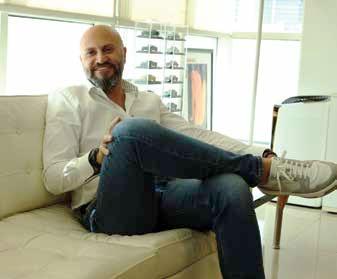
“In an industry that glorifies the grind, we’re saying the opposite: rest is productive.”
Here’s what happened when we stopped managing people like machines and started treating them like humans.
Our retention rates soared while industry turnover reached unprecedented levels. Our creative output became bolder, more authentic, more emotionally resonant. Clients started asking not just for our campaigns, but for our culture. Awards followed, not because we chased them, but because work born from genuine care simply performs better.
This isn’t altruism disguised as strategy. It’s strategy informed by humanity.
Happy employees create happier clients. Rested minds generate fresher ideas. People who feel valued deliver value that can’t be commoditised. In an industry where talent is everything and differentiation is elusive, treating people exceptionally well isn’t just the right thing to do – it’s the smart thing to do.
Our approach costs money upfront. It requires planning, flexibility and faith that investment in people pays dividends beyond quarterly reports. But it’s delivered something priceless: a team that chooses to be here, not because they have to, but because they want to.
While others debate the future of work, we’re living it. Our governance model proves that you can prioritise people without sacrificing performance. That you can be profitable while being progressive. That the best business strategy might just be treating humans like humans.
This is our revolution: Quiet, consistent and completely focused on the people who make everything else possible. Because when you get the culture right, everything else follows. The industry is watching. Some are sceptical. Others are starting to follow.
We’re just getting started.
By Roy Aftimos, CEO, C2 Comms
As global frameworks push for greater accountability in digital emissions, the Middle East & North Africa (MENA) region is witnessing a sharp rise in sustainable media practices, driven by innovation, demand for better quality, government mandates, and a growing awareness among brands of their carbon footprint.
This momentum follows the release of the updated Ad Net Zero Global Media Sustainability Framework at Cannes Lions in June, which provides a clear global roadmap for measuring, managing, and reducing carbon emissions from media campaigns.
The framework comes as regional governments including the UAE and Saudi Arabia accelerate toward ambitious net-zero goals, putting pressure on every sector, including media and advertising, to align with national strategies.
Digital media, once considered a low-impact channel, has emerged as a significant contributor to global carbon dioxide emissions (CO²e) , primarily due
‘‘SUSTAINABILITY IS BECOMING NOT JUST A COMPLIANCE MEASURE, BUT A COMPETITIVE ADVANTAGE.’’
not just a compliance measure, but a competitive advantage. What we’re seeing in MENA is a fundamental shift, one where performance and responsibility are no longer at odds, there’s literally no trade off.
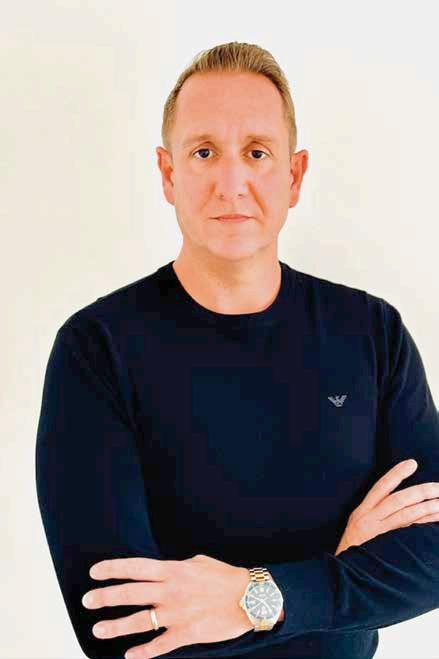
to energy-intensive programmatic wastage, ad serving, fraud and dataheavy creative. In response, advertisers in MENA are now seeking more efficient, responsible ways to reach consumers.
Regional players have been quick to adopt sustainable media technologies. Media companies now offer brands in MENA a combined model of media efficiency and carbon reduction, developing global and regionally curated, low-carbon marketplaces.
These curated marketplaces feature high-quality inventory across premium publishers and placements, with the added benefit of using streaming creative instead of traditionally heavy assets. Streaming creative not only offers users a better experience but also uses less data transfer, reducing carbon consumption whilst loading on the first pixel to result in better attention and viewability metrics.
Another key enabler of this transition is artificial intelligence (AI), which is transforming how media is bought, delivered, and optimised. Technologies like those offered by Perion – formerly Greenbids AI – are helping brands reduce the carbon footprint of campaigns on YouTube, Meta, and other platforms, while maintaining or even improving campaign performance.
As more brands begin tracking CO²e alongside traditional KPIs like reach and conversion, sustainability is becoming
Partnerships with like-minded agencies that align with optimising performance while reducing carbon emissions further contribute to clean advertising.
Mazen Mroueh, Head of Performance, Product, and Operations at our partner agency Publicis Media MENA, said, “Partnerships of this nature allow us to empower clients with strategies that simultaneously optimise performance and drastically reduce carbon emissions. This isn’t just about efficiency; it’s about shaping a sustainable future for our industry and also significantly reduce carbon output, an increasingly critical priority in today’s market.”
The region’s media buyers and chief marketing officers (CMOs) are increasingly embedding sustainability into campaign briefs, demanding carbon transparency from partners, and setting internal emissions-reduction targets. Industry analysts note that categories like automotive, travel, consumer packaged goods (CPG) and retail are among the early movers. The rapid adoption of AI-driven solutions, government policy shifts, and global pressure from investors and consumers are creating a tipping point. What was once seen as a future-facing aspiration is now a boardroom priority. With entities such as Ad Net Zero providing guidance and companies across MENA actively rolling out carbon-conscious strategies, the region is positioning itself not just as a participant but as a leader in the future of sustainable media.
By Andy Powell, Co-Founder and CEO, Conscious Media
Conscious Media’s Andy Powell explains how the MENA region is redefining sustainable advertising.
WonderEight’s Karim Abou Rizk breaks down six reasons why today’s sustainability messaging is falling flat – and how brands can reshape it to earn trust and attention.
Sustainability is no longer a niche topic or an optional value add. It is a non-negotiable business imperative. But the way we communicate sustainability hasn’t kept up. Many of today’s brand narratives around environmental, social and governance (ESG) feel like background noise: Vague promises, generic imagery and language that lacks impact or trust. The communication gap isn’t due to lack of interest; it is due to a lack of clarity and creativity.
This is especially true in sectors such as food and beverage, where sustainability touches everything from packaging to sourcing to daily consumption. Governments across the region are setting clear benchmarks. Saudi Arabia’s Vision 2030 and the UAE’s Net Zero 2050 strategy are shifting the private sector’s role from compliance to leadership. Meanwhile, socially conscious consumers are growing in number and influence. But, too often, the brand stories lag behind the actual progress.
If sustainability is now part of the business model, it also needs to become part of the brand story. It must be embedded into how we design identities, shape messaging and engage audiences.
So, what’s holding brands back?
1. VAGUE WORDS, MISSED MEANING
Terms such as ‘eco-friendly’, ‘green’, or ‘planet-positive’ are overused and under-explained. A more effective approach is to translate sustainability into real, personal benefits. Say the product uses 30 percent less plastic. Say the refill model saved 5,000 bottles. When the message is clear and the benefit is tangible, people pay attention.
2. DATA NEEDS STORYTELLING
Facts are not enough. Numbers require context. Instead of saying a plant-based meal saves water, equate it to the impact of skipping three showers. Instead of citing reduced emissions, translate that into a relatable everyday action. When data becomes human, it becomes powerful.
3. REIMAGINE THE LOOK OF SUSTAINABILITY
The visual language of sustainability is stuck in the past. Earthy tones, leaves and recycling icons once signalled purpose, but today they blend in. To stand out, brands must reinvent the
aesthetic. Bold colours, unexpected typography, humour and cultural relevance can all convey sustainability without falling into cliché.
4. PURPOSE ISN’T A PERFORMANCE
Consumers are increasingly sceptical of perfection. They want honesty, not moral superiority. Brands that acknowledge their journey build more credibility than those that posture. Transparency, humility and progress are far more powerful than virtue signals.
5. ESG NEEDS TO BE PARTICIPATORY
Whether it’s social impact, environmental change or governance reform, audiences want to be part of the mission. Campaigns that invite participation, from community-driven challenges to co-created product lines, outperform those that speak from the top down. Sustainability shouldn’t just be told, it should be lived together.
6. GOVERNANCE DESERVES ATTENTION
Sustainability isn’t just about the planet. It’s about how businesses are run and how people are treated. Clear governance practices, whether ethical sourcing, transparency in production or diversity equity and inclusion (DEI) commitments can and should be part of the brand narrative. These are not back-end strategies; they are forward-facing values.
Across the GCC, we are seeing brands start to embrace this shift. Food brands are rethinking packaging not just for shelf appeal but for recyclability. Regional tech platforms are introducing energy-efficient features and inclusive hiring. Government-backed programmes are giving sustainability innovation a proper stage. But communication still needs to catch up. The opportunity is clear. A rebrand of sustainability doesn’t
‘‘IF SUSTAINABILITY IS NOW PART OF THE BUSINESS MODEL, IT ALSO NEEDS TO BECOME PART OF THE BRAND STORY.’’
mean just polishing the message. It means giving it emotional resonance, creative expression and cultural relevance. It means treating ESG not as a corporate social responsibility (CSR) checkbox but as a central pillar of how the brand lives in the world. For creative teams, this opens new doors. Designing for impact. Messaging with meaning. Building brand experiences that aren’t just responsible, but remarkable.
Because if the stories we tell about sustainability don’t evolve, the worldchanging work being done behind the scenes risks going unnoticed. The business case will be missed. And the public trust will erode.
Sustainability needs a rebrand. Not for appearance, but for impact.
By Karim Abou Rizk, CEO and Partner, WonderEight

You’ve heard before that sustainability is fundamental to business growth, we are at a critical point in time and even marketing can play its part.
This continues to be true, and the widespread adoption of sustainable marketing that we are seeing is set to profoundly and permanently transform the Middle East’s industry.
Fundamentally, the goal is to shift a change in consumer behaviour towards more responsible consumption and deeper, values-aligned brand connections. This, in turn, drives significant industry-wide shifts. Firstly, it accelerates product and supply chain innovation. The demand for sustainable products necessitates ecofriendly materials, ethical sourcing, and the implementation of circular economy models like take-back schemes or on-demand manufacturing to minimise waste. Local production gains momentum, further reducing transportation emissions.
Secondly, digital marketing is evolving to minimise its own environmental footprint. This includes prioritising energy-efficient web services, optimising content to reduce data storage, and shifting from physical to digital marketing materials.
Thirdly, the market is witnessing the emergence and growth of entirely new eco-friendly sectors, from organic cosmetics and sustainable fashion to eco-tourism and green banking services. Companies authentically embracing sustainability will find new avenues for growth and diversification.
Finally, there will be an increased emphasis on transparency and accountability. Companies will face pressure to provide verifiable sustainability reports and impact statements, fostering a culture where genuine commitment, not just rhetoric, defines success.
This overall transformation aligns deeply with the national visions of GCC countries, supporting their goals for economic diversification, environmental preservation and social progress.
INCORPORATING SUSTAINABLE PRACTICES BEYOND CARBON REDUCTION
While carbon reduction remains a critical aspect of sustainability, effective sustainable marketing extends beyond this single focus by embracing a holistic approach aligned with the United Nations’ (UN’s) Sustainable Development Goals (SDGs). Marketers can broaden their impact by considering the social and governance dimensions of sustainability.
Holistic SDG alignment in campaign execution:
To authentically support the UN’s SDGs that a brand has committed to, marketing teams must ensure that campaign execution –including media placement and advertising choices – reflects those same values.
This means deliberately running ads on platforms, websites, and media networks that actively support or promote the same SDGs. For example, a brand aligned with SDG 4 (quality education) could prioritise ad buys on educational content platforms or publications that champion equitable access to learning. Brands committed to SDG 5
(gender equality) or SDG 10 (reduced inequalities) might choose to advertise on media that uplifts underrepresented voices, avoids exploitative content and maintains inclusive editorial standards. Similarly, environmentally focused brands supporting SDG 12 (responsible consumption and production) can ensure their campaigns appear on sites with verified sustainability practices, ethical content guidelines or climate reporting initiatives. Aligning media partnerships with the brand’s SDG values not only strengthens campaign credibility but also amplifies impact by directing resources toward like-minded ecosystems, reinforcing a values-driven marketing strategy from end to end.
Authenticity and transparency: To avoid greenwashing, marketers must ensure all sustainability claims are specific, measurable, and verifiable. This involves publishing comprehensive sustainability reports, clearly outlining achievements and challenges, and engaging in honest storytelling that reflects the brand’s genuine journey. Trust is built through actions, not just words.
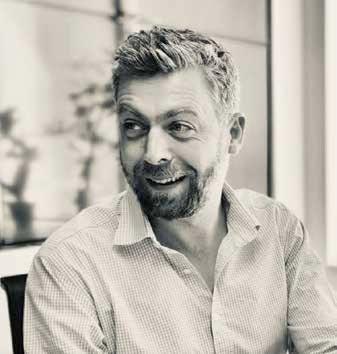
Educating and empowering consumers: Marketing campaigns can serve as powerful tools for consumer education, raising awareness about critical environmental and social issues. By informing consumers about their choices’ impact and providing easy alternatives, marketers empower them to make more sustainable decisions. This could involve highlighting circular models, promoting product longevity or explaining ethical sourcing.
Sustainable campaign execution: Beyond the message, the medium matters. Marketers can implement sustainable practices within their own operations. This includes prioritising digital-first content to minimise physical waste, utilising renewable or recycled materials for print campaigns, and optimising digital assets (e.g., smaller image sizes, efficient email campaigns) to reduce energy consumption. Event planning should also prioritise sustainability, from reusable materials to carbon offsetting travel.
Stakeholder collaboration: Sustainable marketing is a collective endeavour. Marketers should actively engage all stakeholders – employees, suppliers, customers, and local communities – in their sustainability initiatives. This fosters a shared sense of responsibility and leverages diverse perspectives to create more impactful and authentic campaigns.
In conclusion, the shift towards sustainable marketing represents a profound evolution for the industry, particularly in the Middle East. It is driven by informed consumers, ambitious national agendas and the inherent benefits of ethical business practices. By committing to a holistic approach that integrates the SDGs beyond carbon reduction, prioritises authenticity, educates consumers and adopts sustainable execution, marketers can not only drive commercial success but also play a pivotal role in shaping a more resilient, equitable and sustainable future for the region and the world.
By Robin Phillips, General Manager, The Vantage
The Vantage’s Robin Phillips discusses key points to consider when crafting sustainable marketing that goes beyond carbon reduction.

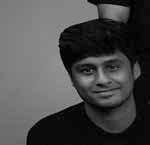
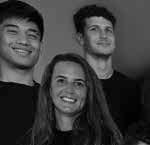
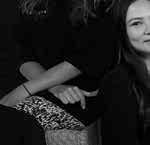

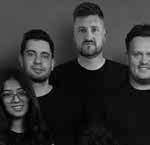


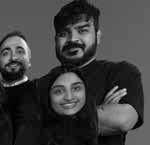
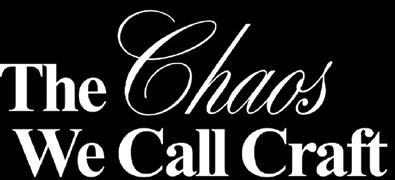

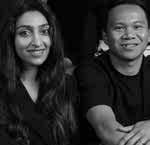
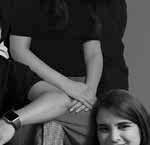


We’re not your typical agency, and we never planned to be.
Built quietly under the radar, we move fast, react faster, and thrive in the chaos we call craft. We’re a big engine, powered by 25 people who care deeply about what they create and who they create it with.
We may be new to the market, but we move with the confidence of one that’s been in the game for decades. We’ve built a space where even the toughest days still end with a sense of momentum. That’s not just culture. That’s ENIGMA.
From the first brief to the final pitch, our ideas get loud, push boundaries, and somewhere in that middle ground, the work sharpens, ideas shapeshift, and experiences come alive.
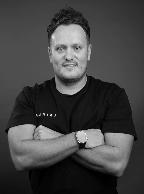
FOUNDER & MANAGING DIRECTOR
“I didn’t start Enigma to follow a formula. It started with instinct, and a belief that trust drives everything.”
Since day one, we’ve known exactly what we don’t want to be, and that’s anything close to ordinary. We’re here to create moments that feel like nothing else in the industry.
We work with one shared vision, but our team is made up of multi-skilled minds, creatives exploring formats they’ve never touched, strategists stepping into production, and producers pushing ideas into uncharted territory. Everyone’s building toward the same goal: experiences that leave a mark.
Somewhere along the way, our scope expanded; not by design, but because we never limited ourselves to what was expected. We’ve never been about ticking boxes; if an idea feels right and we believe in its impact, we pursue it. As AI continues to redefine the creative landscape, we’ve embraced it as a tool to push boundaries and unlock possibilities our clients didn’t even know existed.
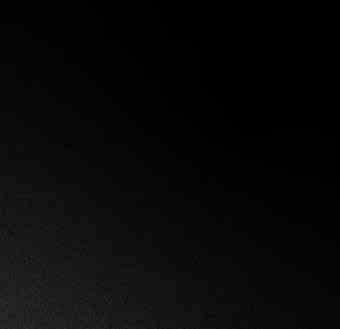
Adam’s approach has always been people-first in a fast-paced industry. He leads with clarity and believes that real creative work doesn’t happen without trust in your team, your clients, and the process.
He doesn’t care for working with “any” brand. He looks for those making a statement, the brands shifting the culture or ready to. “The brands that stay with you are doing something bigger than just selling. Those are the ones we want to build with.”
That same lens is what shaped Enigma from day one. No fluff. No ego. Just a team of confident talented people. “We’ve kept it tight on purpose. Small doesn’t mean less, it means closer. We’re not outsourcing our culture. We’re building it from the inside.”
For Adam, brand experience is more than ideas and timelines, it’s presence, energy, and consistency. The tools will evolve, the platforms will change, but one thing stays the same: relationships matter.
“Face time still moves the needle. Clients don’t just need creativity, they need people who show up.”

Our clientele includes global icons like Netflix, New Balance, and Bentley, alongside regional powerhouses like Majid Al Futtaim, AGMC, and Abu Dhabi Motors. We operate regionally, collaborating across the GCC, from automotive and retail to luxury fashion, real estate, and beyond. Building the right brand experience is our language, and we speak it fluently.
In just two years, we’ve built an agency that moves with momentum adapting, anticipating, and creating experiences built for the now. We’ve grown with our clients, with the culture, and with a team that shows up every time.
As we celebrate this milestone, we’re not just accelerating, we’re levelling up. We live in the chaos we call craft. You’ll be seeing a lot more of ENIGMA around.
HAPPY ANNIVERSARY TO US!

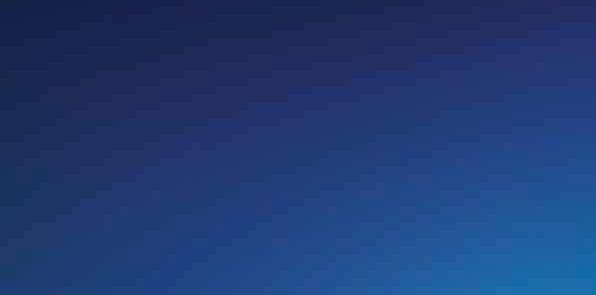




Emirates NBD’s #UnitedAgainstFraud campaign raises public awareness of evolving cybercrime methods via engaging content delivered across multiple channels.
s banking undergoes a digital revolution, the sophistication of financial fraud is keeping pace. As banks adopt advanced technologies to improve customer experience and streamline operations, cybercriminals are similarly exploiting these innovations to craft more sophisticated schemes targeting mobile and online users.
Recognising the pressing challenge of fraud, Emirates NBD, a prominent banking group in the MENAT region, has unveiled a multifaceted anti-fraud initiative under the banner of #UnitedAgainstFraud. This comprehensive campaign, launched in collaboration with Dubai Police and the Central Bank of the UAE and featuring a series of consumer awareness videos on social media, exemplifies the bank’s unwavering commitment to customer protection.
Financial fraud has become increasingly sophisticated, with scammers exploiting digital platforms to target unsuspecting victims. Emirates NBD’s proactive stance aims to raise public awareness and educate consumers about real-time scams, encouraging individuals to remain vigilant against fraudulent activities and actively report such incidents. Emirates NBD has remained at the forefront of customer protection in digital banking, committing AED 1bn to digital transformation. This significant allocation supported a four-year IT transformation, which entered its final year in 2020, and was dedicated to building world-class capabilities through significant architecture, infrastructure, operating model and platform upgrades. The bank’s approach acknowledges that technology alone cannot combat this threat –it requires a collaborative effort between

financial institutions, law enforcement, and an educated public.
The #UnitedAgainstFraud campaign emerges from this understanding, representing a holistic approach that goes beyond traditional security measures to create a culture of awareness and vigilance.
The #UnitedAgainstFraud campaign, featuring innovative Ripple Effect storytelling, immersive Vox cinema experiences, a ‘Spot the Fraudster’ campaign, and trending social content, builds on a legacy of public awareness efforts. These include the 2023 #IWillSurvive campaign, an upbeat video adapted from Gloria Gaynor’s hit to encourage fraud reporting, and the 2019 Dubai Police collaboration ‘It Wasn’t Me’ video, which provided identity and account security guidelines.
The #UnitedAgainstFraud campaign has delivered exceptional results across multiple channels and touchpoints, showcasing the power of integrated marketing strategies in public awareness initiatives. The diverse campaign portfolio demonstrates remarkable versatility in
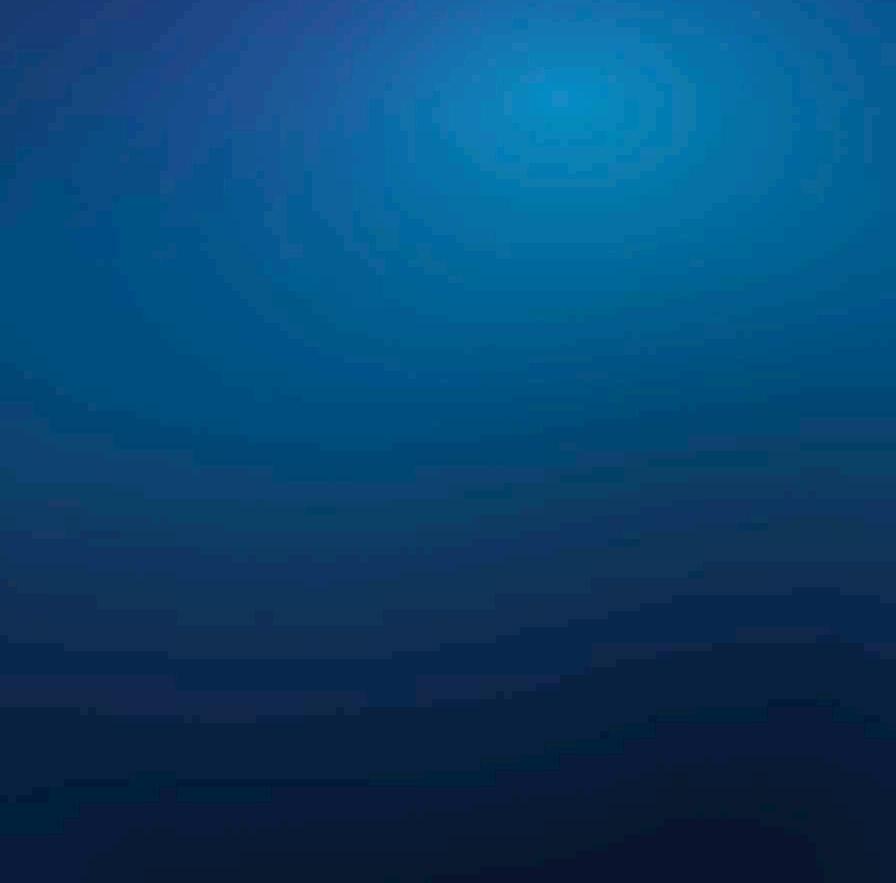




contemporary scams that affect different segments of the UAE population.
For instance, the fake Hajj scam video, contextually produced for the Hajj season, addresses the exploitation of religious obligations, warning consumers about unofficial packages that lack proper permits and official procedures. The message is clear: ‘Don’t let scammers ruin your Hajj. Every year, many people get tricked by fake Hajj deals that lead to nothing. If someone offers you a package without proper permits, official steps, or a real office, it’s not a deal, it’s a scam.’ This campaign specifically targets one of the UAE’s most vulnerable demographics during holy seasons, when emotional investment can override rational decision-making.


Concert ticket fraud receives attention through messaging that encourages consumers to secure their entertainment experiences by purchasing only from verified websites or trusted sellers. The campaign uses relatable language – “Don’t let fake tickets steal your spotlight!” – that resonates with younger demographics who frequently purchase entertainment tickets online, connecting with their interests while delivering crucial safety information.
The UAE Pass scam video addresses a particularly sophisticated form of identity theft targeting official government services. The campaign emphasises that “Scammers are after your UAE Pass. Don’t let them steal your identity. Never share your banking details or OTPs.” Given the UAE Pass’s critical role in accessing government services, this campaign addresses a threat that could compromise both personal finances and official documentation access.
WhatsApp scams, which often begin with deceptively friendly greetings, receive specific attention in a video that highlights how innocent interactions can lead to financial loss. The




campaign message – “WhatsApp scams may start with a friendly ‘Hi!’ But it can end in financial loss” – encourages consumers to question everything and protect their digital lives, acknowledging that modern scams often begin with social engineering rather than obvious requests for money.
Seasonal awareness is addressed through targeted Black Friday campaigns that warn against fake deals and phishing scams during high-volume shopping periods. These campaigns provide practical guidance, encouraging consumers to “tick the checklist” before purchasing and report suspicious activity immediately. The messaging combines prevention strategies with action-oriented responses: “Don’t let Black Friday become Black Fraud Day! Shop smart online and avoid shady deals. Safety over sales!” Through its ‘United Against Fraud’ campaign, Emirates NBD also actively educates labourers in camps on safe banking and financial literacy to prevent them from falling victim to scams. Beyond these social and community-focused initiatives, Emirates NBD’s commitment to fraud prevention extends to the academic sphere as well. The strategic partnership between Emirates NBD and the University of Wollongong in Dubai (UOWD) represents a forward-thinking approach to fraud prevention education that targets students and the wider academic community. This collaboration recognises that young adults, particularly university students, represent both a vulnerable demographic and powerful advocates for fraud awareness within their
The university partnership integrates fraud awareness into educational programmes and activities, ensuring that fraud prevention becomes part of the broader educational experience rather
Students, as digital natives, are simultaneously particularly vulnerable to sophisticated online scams and highly effective at spreading awareness through their extensive social networks. They often have limited financial experience but high digital engagement, making them prime targets for scammers while also serving as influential voices
Furthermore, the partnership extends the campaign’s reach into the wider community, as students often serve as informal educators for family members and friends who may be less
This multiplier effect ensures that fraud prevention knowledge spreads beyond the immediate target demographic to reach vulnerable populations who might not otherwise receive
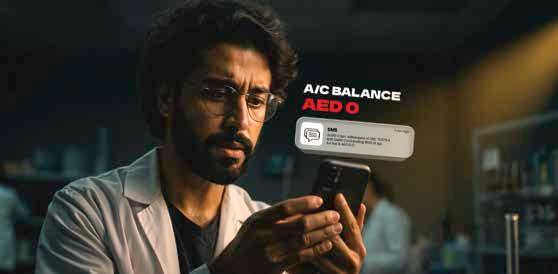


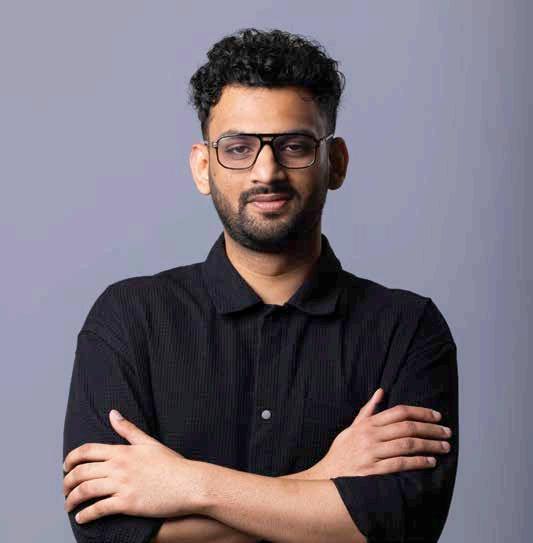
Motivate Val Morgan’s Sahal Valliyot reveals the plot twist within sustainable cinema advertising.
There’s something timeless about the cinema experience: the hush as the lights dim, the collective anticipation, the larger than life stories that unfold on a screen. Cinema advertising has always invited brands to share the stage with these stories, reaching audiences when they are most receptive and inspired. And now, cinema is about to premiere its most urgent sequel: sustainability.
The opening credits of this sequel rolled on June 17, 2025, at Cannes Lions. On the world’s most creative stage, Ad Net Zero announced the inclusion of cinema in its Global Media Sustainability Framework – a move that finally gives our industry a standardised way to measure and manage the carbon footprint of every cinema campaign.
As the UAE’s Cannes Lions representative and a proud member of Screen Advertising World Association (SAWA – the global cinema advertising association), Motivate Val Morgan has had the privilege of witnessing firsthand how collective hard work can drive meaningful industry change. The dedication and expertise of SAWA’s Global Task Force on Sustainability have ensured that cinema now takes its rightful place in the global conversation around sustainable media, giving our industry the tools – and the collective confidence – to move forward with purpose.
The framework offers cinema a clear and consistent methodology for tracking emissions. This methodology dissects the lifecycle of an advertising campaign into its fundamental phases: creative production, file storage, delivery to cinemas, projection, and the broader operational aspects.
For the first time, it enables our industry to account not only for the energy used to bring stories to the screen, but also for the hidden footprint of digital processes and operational activities that support every campaign.
For brands and agencies, this means cinema’s environmental impact can be assessed and compared transparently, using robust and credible data. For the industry, it’s a long-awaited validation of cinema’s commitment to doing business responsibly – and a practical toolkit for making every campaign more sustainable.
Among the qualities that distinguish cinema, the framework now enables us to recognise, both in spirit, and in data, the particular efficiency of a shared viewing environment. In cinema, a single ad is experienced by many, often in a setting that encourages attention and focus. This is just one aspect of how cinema’s unique context is now reflected in our approach to sustainable media.
With the Middle East cinema market projected to grow from $1.66bn in 2024 to $3.44bn by 2033, and laser projection technology alone capable of reducing individual cinema carbon footprints by up to 70 per cent, the timing for standardised measurement couldn’t be more critical.
But, as anyone in cinema knows, the story is never just about the script – it’s about what the cast and crew do with it. The inclusion of cinema in the framework is an essential first step, not a conclusion.
The real value lies in what comes next: turning measurement into meaningful action.
For the industry, the immediate priority is clear: adopt the new framework, start collecting and auditing emissions data, and foster a culture of shared learning. It means looking beyond compliance, to set ambitious but achievable reduction goals – investing in energyefficient projection, pushing for greener production techniques, and making sustainability a core part of every (creative) brief. Collaboration, data-sharing, and a willingness to challenge old habits will define our success.
This new chapter is a chance for cinema advertising to prove that sustainability isn’t a constraint, but a catalyst. As audiences and clients alike seek experiences and platforms that reflect their values, cinema’s transparency and willingness to evolve only strengthen its unique appeal. We have an opportunity and, I’d argue – a responsibility, to model what ambitious, collective action can look like in media.
As the Cannes Lions UAE representative, we see firsthand how global standards can drive local impact. The UAE, with its youthful population, spirit of partnership, and appetite for innovation, is particularly well positioned to lead this next act. We’re ready to support clients, cinemas, and collaborators alike in turning measurement into movement.
The tools are ready. The framework is in place. Now it’s up to all of us, from the UAE to the world, to take the stage, work together, and deliver on the promise of a more sustainable future for cinema advertising.
Because, as every great film reminds us, it’s the unexpected collaboration – the plot twist – that makes the whole story worth watching.
By Sahal Valliyot, Deputy Manager – Marketing and PR, Motivate Val Morgan



The media representative will lead the rollout of more than 600 premium outdoor sites across Makkah in a deal valued at more than SAR 600m.
Rotana Signs, the exclusive representative of the alliance between Modern Advertising Co. and Rotana Media Services, announced that the alliance has officially won the contract to launch the largest out-of-home advertising project in the Holy City of Makkah. The contract was signed with Al Balad Al Ameen, the investment arm of Makkah Municipality.
This landmark 10-year concession, valued at more than SAR 600m, marks a major advancement in Makkah’s advertising landscape that will see more than 600 premium advertising sites installed across the city. The advertising network will feature a diverse mix of various digital, static and transit formats, positioned and strategically located to serve the growing demand for advertiser presence, all while maintaining the city’s unique cultural and spiritual identity.

This project is a key component of the broader urban development unfolding across Makkah, aligned with Saudi Arabia’s Vision 2030 objectives of economic diversification, urban enhancement and enriching the public’s experiences. While preserving Makkah’s inherent identity, the alliance will roll out state-of-the-art advertising structures that elevate the city’s visual environment without compromising its heritage.
“The project represents a contribution to Vision 2030, helping grow the non-oil sector.”
Hasan Zaini, Deputy CEO of Sales of Rotana Signs, commented: “Makkah holds a profound significance as a symbol of spirituality, culture and humanity. The alliance is committed to ensuring that the visual experience for residents, visitors and pilgrims honours the city. This project is not just about installing media assets, but rather about crafting an integrated visual journey that complements the city’s identity with elegance and innovation.” He added, “This project represents an active contribution to Vision 2030, helping elevate and grow part of the non-oil sector while creating sustainable value for the city. In collaboration with Al Balad Al Ameen and Makkah Municipality, we are committed to developing a smart and efficient advertising ecosystem that benefits the city and the millions of visitors welcomed each year.”
Zaini further emphasized Rotana Signs’ strategic approach of creating an end-to-end advertising experience that accompanies pilgrims and visitors throughout their entire journey. Starting from their arrival at Jeddah’s Hajj Terminal, through to the Haramain Highspeed Railway, and into Makkah and Madinah, brands have a growing opportunity to engage with audiences at every stage with consistent, impactful messaging across multiple touchpoints.
The alliance views the Makkah out-of-home project not only as a privileged responsibility but also as a critical step in its long-term growth strategy. As part of its expanding national footprint and growing track record, it aims to introduce innovative advertising solutions across Saudi Arabia’s cities.
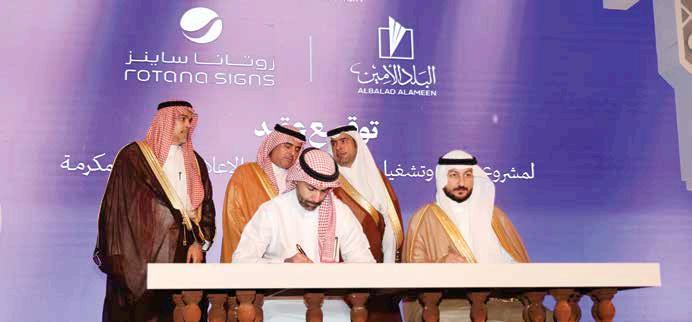
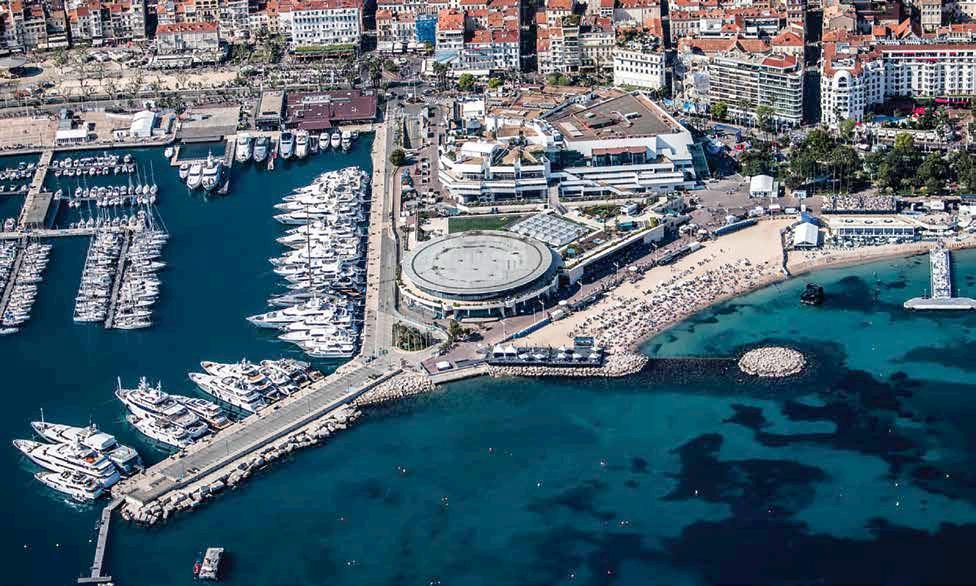
Campaign Middle East wraps up all the top take aways from the Cannes Lions International Festival of Creativity 2025. Here’s an in-depth look at all the heated debates, interesting insights and standards set for the year ahead.
By Anup Oommen



The 72nd edition of the Cannes Lions International Festival of Creativity, held from 16 June to 20 June 2025, witnessed a healthy mixture of unfettered emotions unleashed within the ‘safe space’ of Cannes on the stunning French Riviera.
From curiosity, courage and creative confidence to fascination, frustration and a fear of the future, marketers – old and young, experienced and ambitious –shared their feelings and stress-tested their strategies.
Campaign Middle East was in the thick of it all during the five-day festival, covering keynotes and panels, moderating closed-door round table discussions (more on Page 37), hosting industry meet-andgreets (more on Page 43), and offering leaders from the MENA region – and across the globe – the opportunity to voice their latest learnings.
OVERVIEW: SETTING THE SCENE
At the outset, every single conversation at Cannes Lions 2025 cemented one – or more – of the six foundational pillars holding up the current marketing edifice. These include: Creativity – originally human and artificial intelligence (AI)-assisted; Technology – updates on generative AI, algorithms, platforms and social media; Outcomes – building brand equity and bringing in financial returns;
Social impact – purpose-driven ‘marketing for good’ to heal a polarised planet;
Co-creation, culture and context – collaborating with a creator economy; Education – the final piece that glues all the above together.
Strong opinions were voiced on each of these topics as marketers, martech and adtech leaders, celebrities, content creators, consultancies, brand architects and agency leaders brought the bustle and buzz back to Cannes – otherwise a serene vacationers’ paradise.
Inside The Palais, delegates who attended keynotes, fireside chats and panels at the Lumière Theatre, Théâtre Claude Debussy, The Forum, The Terrace and The Rotonde were served talks on human ingenuity, social impact and creative effectiveness in the age of AI.
Those who dared to brave the heat, humidity and long queues along the Croisette were made privy to the latest platform updates, algorithm hacks and content creator strategies to drive speed, efficiencies, optimisation and insights.
Attendees keen on spotting celebrities were often left with the hard choice of choosing between stages as Cannes Lions welcomed Hollywood actress Reese Witherspoon, former women’s World No.1 tennis superstar Serena Williams, Olympics 100m gold medalist Noah Lyles, and world-record-holding long-distance
runner Mo Farah, among many others. Meanwhile, most global and regional agency leaders shuffled between The Palais, jury rooms, their dedicated beach pop-ups and their agency tents, while the adtech and martech players moored their yachts in the marina.
In parallel with the Cannes Lions programme, leaders also held high-level meetings with global counterparts and signed strategic partnerships with key stakeholders in the historic lobbies of Le Majestic Barrière, Carlton Cannes, Hotel Splendid and Hotel Martinez.
Some of the most compelling conversations took place over meals or under shaded canopies, as independent agency leaders, creators, artists and entrepreneurs dissected the Cannes Lions 2025 narrative and charted their next moves.
The overall consensus was that product discovery is fundamentally changing. Celebrities, creators and community leaders will drive brand trust. AI infrastructure will be critical to amplifying creativity and highlighting cultural nuances. As a result, AI augmentation, automation, accountability and authenticity will remain some of the key differentiators.
CREATIVITY: SEARCHING FOR THE SOUL OF CANNES
For those attending Cannes Lions for the
nth time, the growth and scale of the festival remained remarkable. Leaders agreed that it was impossible to attend every session or catch insights from every speaker they hoped to hear on stage.
And yet, the change in the air was unmistakable. Conversations about campaigns, brand purpose and the quality of advertising work – which in previous years used to occupy the main stage at the Lumière Theatre – were relegated to smaller basement stages, sustainability hubs and jury feedback sessions. Creative work, in itself, was not the priority at Cannes Lions 2025.
However, creativity as a tool to catalyse business outcomes was placed front and centre. This reflected the global and regional focus on return on investment (ROI) and return on advertising spend (ROAS).
In a market where even some of the Big Six advertising holding groups have failed to retain their legacy clients; where several senior leaders have left advertising giants to start their own independent agencies; where competition remains high and margins remain low; where mergers, consolidations and layoffs are making daily news – the chorus on business outcomes drowned out all other conversations.
In conversation with Campaign Middle East, Simon Cook, CEO, LIONS, said, “More brands are attending the festival than ever before. They’re telling us that they’re coming here because they want to understand how to unlock creativity as a driver of growth.”
In the pursuit of growth and business outcomes, creativity and technology were viewed through a different lens – as tools, enablers and means to an end.
Aude Gandon, Global Chief Marketing Officer, Nestlé, told Campaign Middle East, “Creativity means business. Without great creativity, you can’t drive growth or business.”
Fabio Silveira, Managing Director, Havas Creative Middle East, added, “Creativity is still the first and, probably, the most important piece, but business transformation also has a huge role to play.”
As a jury member for the newly added Creative Business Transformation category at Cannes Lions Awards 2025, Silveira added, “This new awards category – as well as the first-of-its-kind CEO panel that we’ve seen at Cannes Lions 2025, an event otherwise known for its CMO panels – is representative of this shift in
conversation from mere creativity to reviewing its very real impact on business outcomes. We’ve been evaluating and awarding work that demonstrates real impact on operations, research and development, HR, as well as all the other facets of the business chain.”
Not mincing words in his chat with Campaign Middle East, Gary Vaynerchuk, CEO and Chairman, Vayner Media, took this a step further saying, “Most of the people at Cannes Lions 2025 should be worried about AI if they’re not contributing to business outcomes. A lot of people want to sell the idea of creativity as a disguise to what marketing should be, which is an engine to growth for business. This entire Palais should be disrupted if they’ve been non-contributive to the brands that have been paying them to deliver outcomes.”
Amid this focus on driving tangible outcomes, leaders also shared opposing opinions on the role of marketing and advertising as a tool to catalyse social change.
While some called for marketing to rotate beyond products and promotion, and move towards purpose, others called for marketing to ‘do its job’ of driving business outcomes.
Siddarth Sivaprakash, Head of Brand & Marketing, Home Centre, Landmark Group, said, “It’s sad to see an important discussion not get its due in the spotlight. If we live in a world and work in an industry where we believe that creativity can solve world problems, to some extent, or at least bring awareness to it, I think we’re really missing out on an opportunity. I feel like at Cannes, this year, we’ve not heard about that sufficiently – especially from Middle East agencies.”
During the CMOs in the Spotlight session on Day 3 of Cannes Lions 2025, Josefien Olij, Senior Director Marketing Communications, Philips, echoed these thoughts.
“We truly need to take a step in the right direction,” Olij said. “We need to look at technology and creativity for good with strategies that are caring and courageous. AI is a part of that. It needs to be an enabler, but not something that replaces. We need to find a way to continue finding solutions to real-world problems, truly collaborate, think strategically, but always with a human touch.”


‘ARE DRIVING BUSINESS OUTCOMES AND ENSURING SOCIAL GOOD MUTUALLY EXCLUSIVE?’
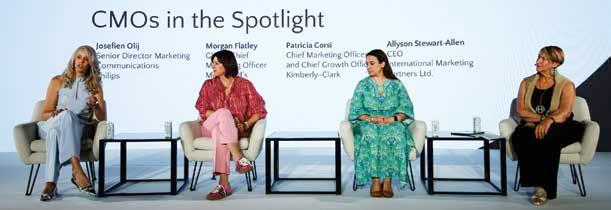









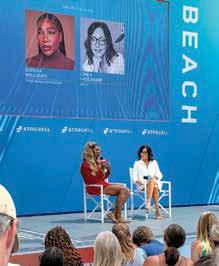


However, reiterating thoughts shared by other leaders across several stages at Cannes Lions 2025, Vaynerchuk responded saying, “Giving back is done in non-profits. If you want to give back, go spend your time, money and energy on non-profits. Donate to causes that make a change. Don’t hide behind ‘giving back’ because you’re being held accountable for business outcomes.”
That said, the gap between on-stage, outcome-focused conversations and award-winning ‘do-good’ campaigns at Cannes Lions became evident when the Grand Prix awards were announced on the final day of the festival.
Several of the campaigns that lifted top honours at the Cannes Lions Awards 2025 clearly showcased a social impact element in their entries, which was recognised by different cohorts of global jury members.
Apart from award categories such as the Glass: The Lion for Change or Grand Prix for Good, which are categorically set aside for do-good campaigns, even the Grands Prix in the Film, PR, Entertainment Lions – Music, and Industry Craft categories were awarded to campaigns that highlighted their positive impact on underrepresented sections of society.
Additionally, Cannes Lions also contributed to social impact by providing complimentary passes worth €2m (AED8.65m) to underrepresented talent and underserved communities.
This discussion raised interesting questions: Are driving business outcomes and ensuring social good mutually exclusive? Can’t we find a way to address basic human problems and drive business growth simultaneously?
Tor Myrhen, VP of Marketing Communications, Apple, addressed these questions through the course of Cannes Lions 2025 – starting with one of the event’s most quoted keynotes.
After receiving the 2025 Creative Marketer of the Year award at Cannes Lions, and highlighting Apple’s business success, Myrhen took to the stage to call for human-centred creativity – designed by humans, designed with empathy, and designed to solve human problems.
He said, “I’ve got good news and I’ve got bad news. The good news is that AI is not


going to kill advertising. The bad news is AI is not going to save advertising either. We have got to save advertising ourselves; and I think it’s by believing in what’s always made it special – which is human creativity.”
Myrhen also emphasised the importance of trust and empathy in the age of AI.
“I think the world needs more optimism,” he said. “We need to drive, with AI riding shotgun. The best marketing makes people feel and laugh and cry and wonder or fall in love with a person or an idea or a brand. We all want to feel. There’s no technology, algorithm or artificial intelligence that works in our world that is more capable of making us truly ‘feel’ like the human mind does.”
Myrhen added, “I believe that this industry was built on creativity, and that’s the game we can win. The human touch is our superpower, so use it. Use your sense of humour; use your incredible taste; use your subtle nuance; use your originality; use your brain and your heart to go out there and make something wonderful.”
He then went on to discuss the moral compass of a brand, highlighting how Apple has stood its ground on privacy and contributed to social good.
Playing Apple’s Flock advertisement on the big screen at the Lumière Theatre, Myrhen explained how the “pretty creepy” ad still became that popular. He reiterated that the success of the ad lay in the fact that it was “extremely human.” He also went on to showcase the beauty of “democratising hearing health” referring to the AirPods Pro 2, which now double up as a clinical-grade hearing aid.
Commenting on the creativity that led to the success of each of these ideas, Myrhen added, “It’s the brain and the heart working together to create something special. No one would say that 40 seconds of muffled sound would become Apple’s most watched holiday ad ever. But Google had the highest search volume for hearing aids in the history of Google search after this ad came out. This is making a difference, which is awesome.”
Responding to this stellar keynote, Ali Rez, Chief Creative Officer, Impact BBDO said, “The subject of the human touch, especially in an era where we’re increasingly relying on machines was special. Also, this is a much-needed
reminder that the value of emotion and craft will never be eroded.”
DRAW A CROWD AT CANNES
Spotify, YouTube, TikTok and Meta also claimed their share of attention at Cannes Lions with key announcements.
Spotify
Days before Cannes Lions, Spotify revealed two new initiatives to help brands further tap into Spotify’s creative playground: the Creative Lab Hub and its inaugural Creative Council.
Highlighted at Cannes Lions 2025, The Creative Lab Hub is a new global destination where brands and advertisers can access Spotify Advertising’s most effective tools, formats, and insights — making it easier to create breakthrough campaigns.
Meanwhile, Spotify’s Creative Council brings together industry-leading creatives to help shape the future of advertising and brand storytelling on Spotify. This group includes top creative leads from agencies including R/GA, BBDO, McCann, Anomaly, VML and GUT, as well as brand leaders from Coca-Cola, Ulta Beauty and AG1.
YouTube
In line with its aim to connect communities and content creators with advertisers, YouTube released Open Call at Cannes Lions 2025. This is a feature within the platform’s Creator Partnerships hub, powered by the YouTube BrandConnect tool, which permits brands to discover and partner with creators at scale.
Through this feature, brands and advertisers will now be able to share a creative brief that explains the requirements of their campaign. This will allow multiple content creators within the YouTube Partner Programme the ability to pitch their video content designed specifically for that campaign and based on the creative brief directly to advertisers. Once the brands and advertisers view, review and approve their video submissions, the promotions or the partnership ads will get activated.
In conversation with Campaign Middle East, Melissa Hsieh Nikolic, Director of Product Management for YouTube Ads, said, “Creators and their authentic content really resonate with YouTubers and communities. Open Call and Creator Partnerships hub helps brands find creators who can tell their stories authentically, while giving creators of all different sizes an opportunity. We think there’s a lot of power in that. This also

provides people with a lot more ways to connect with brands.”
TikTok
At Cannes Lions 2025, TikTok unveiled updates to TikTok Symphony, its suite of generative AI tools designed to streamline creative production and spark bold new ideas. These new updates aim to make scaling on TikTok faster, easier and more efficient.
With Symphony Image-to-Video, TikTok will bring static images to life to help unlock new creative formats, generate multiple variations of existing on-brand content or bring a full product catalogue to life.
Next, with Symphony Text-to-Video, all it takes is a short text prompt to bring an idea to life, enabling advertisers to rapidly generate, test and iterate on a range of creative executions. This also allows advertisers to customise content at scale.
Finally, with Symphony Showcase Products, advertisers will be able to place their products front-and-centre by showcasing them with digital avatars. This gives marketers a new way to feature a product in TikTok-first creative content.
Commenting on these new features, Andy Yang, Global Head of Creative and Brand Products, TikTok, said, “We’re entering a new era of creativity, one where ideas move at the speed of culture, and where AI doesn’t replace imagination but rather accelerates it. With TikTok Symphony, we’re empowering a global community of marketers, brands and creators to tell stories that resonate, scale and drive impact.”
Meta
At Cannes Lions 2025, Meta announced a bevy of AI-powered features, including AI agents integrated into advertisements, which permits users to chat with an advertiser’s bot immediately when clicking on an ad. Meta also held demonstrations for its collaboration with Ray Ban, highlighting Meta AI features on the sunglasses capable of capturing videos and photos hands-free.
In addition to merging creatives with conversational commerce, Meta also showcased ways for brands and advertisers to set up these AI agents on Messenger and WhatsApp through smart prompts. The platform highlighted how performance insights can be derived to hold the ‘AI agents’ accountable to their knowledge and usefulness.
Additionally, Meta also revealed voiceactivated business AI agents, which opens out the possibility for customers to query branded business bots – especially for users who don’t like typing and want a faster, hands-free experience. Add to this Meta’s AI-powered translation tools, which further empower copy and creatives by translating ad content into 10 global languages, therefore, enabling advertisers to take their campaigns global faster. The number of languages that Meta’s AI can translate is set to double by the end of 2025.
Similar to TikTok, Meta is also rolling out an AI-powered image-to-video ad tool across Facebook and Instagram. Through this tool, marketers will now be able to convert up to 20 static product images into multi-scene videos with music and subtitles right in the ad interface.










For the first time ever, advertisers can now become channel owners and run ads within their WhatsApp Status, unlocking a new ad revenue model inside the application.
Meta is also reportedly testing native ads inside the WhatsApp Updates tab, making it the first time ads will appear inside WhatsApp rather than as a click-through from Instagram or Facebook.
However, these chats and channels will be clearly differentiated from the encrypted personal chats, the company clarified.
THE MENA REGION SHINES AT CANNES
The MENA region has had a great run at the Cannes Lions International Festival of Creativity 2025. Out of the 828 Lion winners from 48 countries, the MENA region claimed a total of 32 wins awarded across agencies and markets – up from 22 in 2024.
This year’s Cannes Lions MENA winners included agencies from the UAE, Saudi Arabia and Jordan.
Impact BBDO led the region on total points and was awarded MENA Network of the Year at Cannes Lions 2025, marking a historic seventh time that the network has claimed the title.
In terms of trophies, UAE agencies took home 18 wins, led by FP7 McCann Dubai (1 Gold, 1 Silver, 5 Bronze); VML Dubai (1 Silver, 3 Bronze); Impact BBDO (1 Gold, 2 Silver, 2 Bronze); and LEO Dubai (1 Bronze). Sharing the spoils with Impact BBDO, AdPro& Group picked up Jordan’s first-ever Silver Lion in Cannes Lions’ 72-year history.
Representing Saudi Arabia at Cannes Lions, agencies from the Kingdom lifted 13 metal cats, led by BigTime Creative Shop (2 Golds, 1 Silver, 3 Bronze). The agency was also honoured with the Independent Agency of the Year: Entertainment award. Meanwhile, SRMG Labs lifted one Gold and two Silver Lions, and VML Riyadh won one Silver and two Bronze Lions.
Burson MENA took home a Gold in the PR category at this year’s Young Lions Competitions as the winning team –
“THE MORE WE RELY ON AI, THE LESS WE’RE USING OUR INTELLECT, CURIOSITY AND CRITICAL THINKING ABILITIES.”
down, stay strategic, think big, stick to the fundamentals and pursue the 20-80 ROI instead of the immediate results.”
Through its extensive coverage of Cannes Lions 2025, Campaign Middle East spoke to more than 40 leaders over five days. One theme stood out: Human-centred creativity powered by AI-driven infrastructure and insights can achieve tangible business outcomes and drive social impact.
However, leaders also shed light on certain other concerns.
While some pointed to the need for humans to understand culture and context better, others warned about the dangers of relying too heavily on generative AI tools.
Reda Raad, Group CEO, TBWA\Raad said, “The more that people are using AI, the more we’re noticing that the output is beginning to look more and more alike. We’re seeing this across different categories. We’re beginning to see the flattening of culture, which we need to be wary about.”
He added, “Also, keep in mind that the more we rely on AI, the less we’re using our intellect, curiosity and critical thinking abilities. At the end of the day, we need smarter people, not dumber people within the industry. So, while AI is a great enabler and a great tool, we need to have real conversations about what we do with AI and how we use it.”
Raneem Saleh and Youssef Yammine – topped the category for ‘The Silent B’ campaign. Representing the region at The Rotonde, Fahd Hamidaddin, Board Member and Founding CEO, Saudi Tourism Authority delivered an exceptional keynote to a packed room, delving into the dynamic transformation taking place within the tourism landscape in the Kingdom.
He called for marketers in the Middle East to build brand affinity by developing a deeper understanding of hyper-local consumers, connecting with communities, focusing on collective precision, finding their true voice, and realising the soul of the region’s individuals rather than just seeing them as ‘segments’.
Hamidaddin also called for marketers to take a moment to ‘pause and reflect’ on current challenges such as inadequate attribution, complex optimisation, irrelevant data and daunting scale instead of diving headfirst into idealistic and futuristic AI conversations.
In an exclusive conversation with Campaign Middle East after his keynote, Hamidaddin said, “We should pause to make sure we filter what’s hype, what’s noise, and stay true to the fundamentals. The fundamentals won’t change. What is changing is consumer behaviour and that’s what we need to stay very close to while leveraging AI and technology to really develop a deeper understanding of consumer behaviour.”
He concluded, “With the hype comes a global movement of speed and, conversely, an anti-movement of slow. So, I would say slow
The brand and marketing industry needs to be held accountable, leaders surmised, adding that this accountability should not be pigeon-holed to brand equity or performance metrics alone, but should also be extended to the lasting effect that brands have on people, communities, the society at large and the planet.
The argument is not a complex one, they said. It’s understanding why they got into advertising in the first place and what inspired them to enter this realm of creativity, influence and persuasion.
Tarek Miknas, CEO, FP7 McCann MENAT, said, “My top take away from Cannes Lions 2025 is simplicity. I think the most powerful of the ideas that I’ve liked are the simplest ones that were able to scale, get attention and make a difference.”
All in all, the message from Cannes is clear: Marketing is facing a moment of profound transformation. Against the backdrop of generative AI, cultural fragmentation and the creator economy are upending the media landscape. Creativity remains not just a vital differentiator but one that still belongs to humans.
The time for change is here. We are moving beyond hyped conversations. The new business plan to drive outcomes and social good is based on experimentation, bravery to fail, and the ability to be agile and pivot quickly within an evolving market.
Offering a piece of advice to wrap up discussions at Cannes Lions 2025, Khaled AlShehhi, Executive Director of Marketing and Communications, UAE Government Media Office, concluded, “Everyone needs to think big. We all need to get out of our comfort zones. Be curious. Let’s do something great together. Let’s do something to change our society. Let’s be bold and creative.”

The MENA region made sure its presence was felt at the Cannes Lions International Festival of Creativity 2025, bringing home a total of 32 Lions – a marked leap from last year’s 22 trophies. The winners included standout campaigns from the UAE and Saudi Arabia, as well as Jordan, which made headlines for securing a Silver Lion – its historic first in the festival’s 72year history. Leading the region in terms
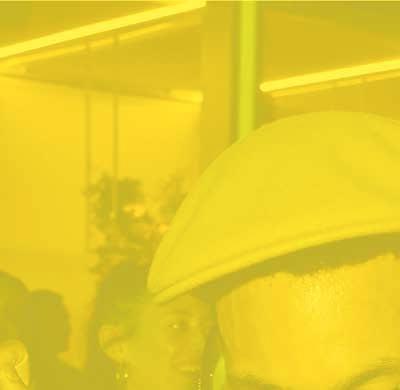
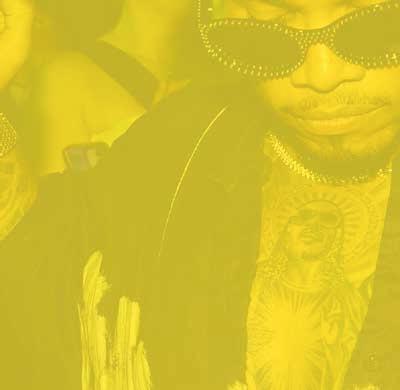

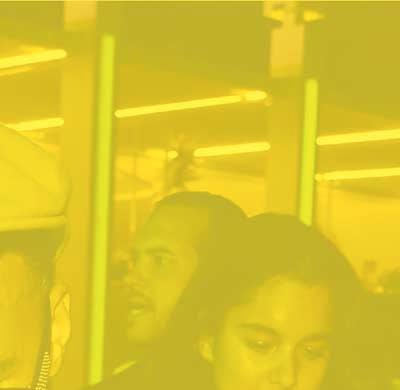
of points was Impact BBDO, which was crowned MENA Network of the Year for a commendable seventh time. Meanwhile, FP7 McCann Dubai, BigTime Creative Shop and VML MENA proudly represented the region, bringing home seven trophies each. BigTime Creative Shop was also named the Independent Agency of the Year –Entertainment at the festival. Here are all the winning campaigns from the region that were recognised at the festival.
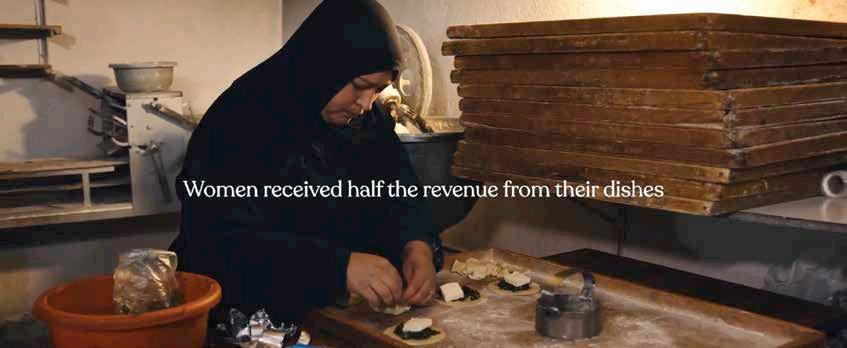
Agency: FP7 McCann Dubai
Client: Arla Foods
Lions: Gold (Sustainable Development Goals); Silver (Brand Experience & Activation); Bronze (Creative B2B)
Tarek Miknas, CEO of FP7 McCann MENAT, said, “We’re proud to represent the MENAT region at Cannes Lions with work that speaks to local truths and resonates globally. Winning across some of the world’s most reputed and respected brands, from Arla and McDonald’s to Waterstones and the Testicular Cancer Society, is proof that enduring partnerships and client trust are the true drivers of powerful creativity. We’re showing up with ideas that are locally born but globally relevant, and that only happens through resilient teams, strong partnerships, and a shared belief that creativity can drive a real impact. Congratulations to all the winners this year, we’re honoured to be in such great company.”

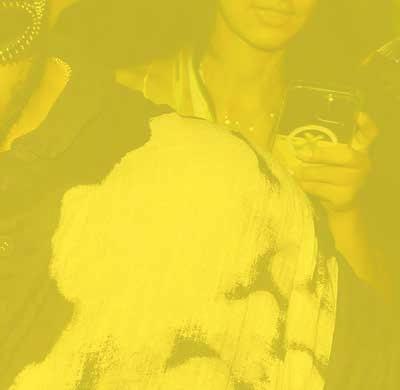
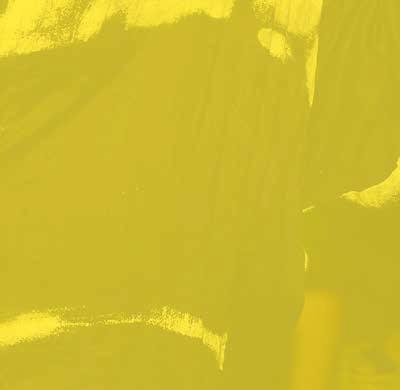
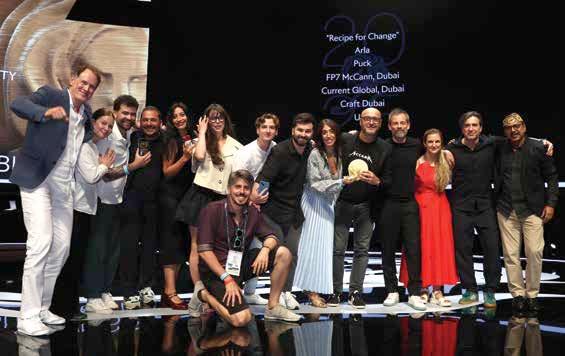


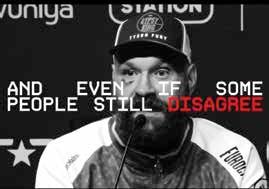

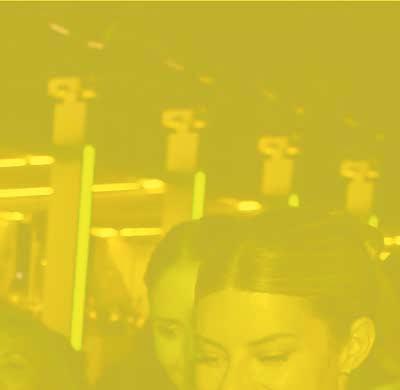
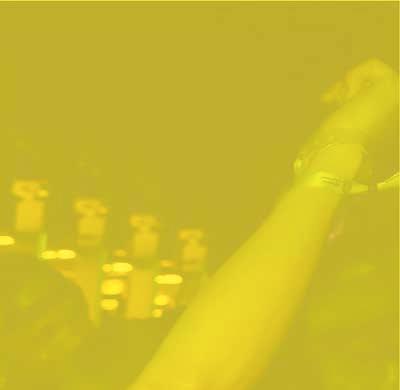
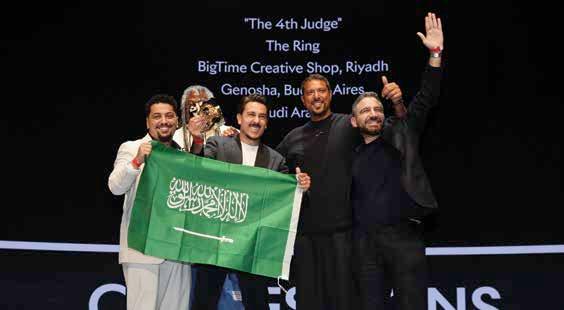
Agency: BigTime Creative Shop, Riyadh
Client: The Ring
Lions: Gold (Entertainment Lions for Sport); Silver (Entertainment Lions for Sport)

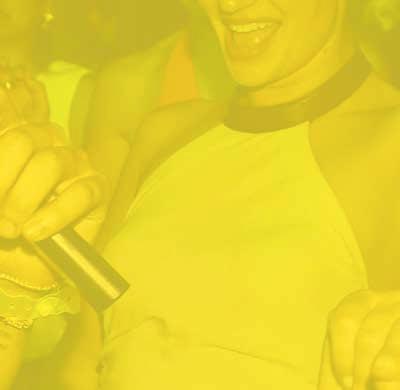
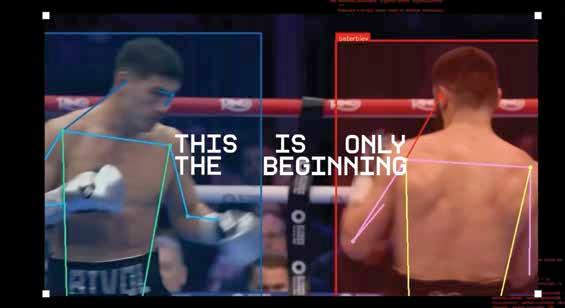
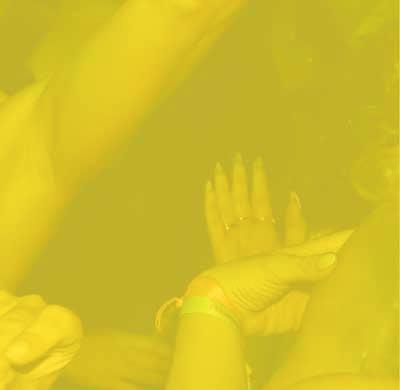
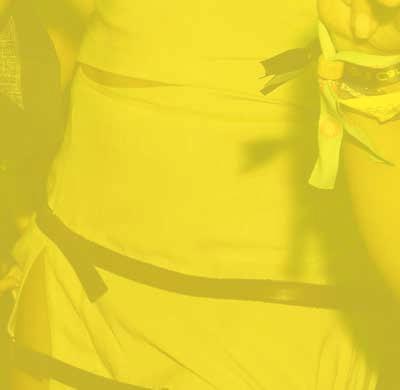

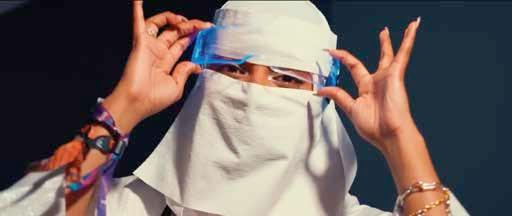
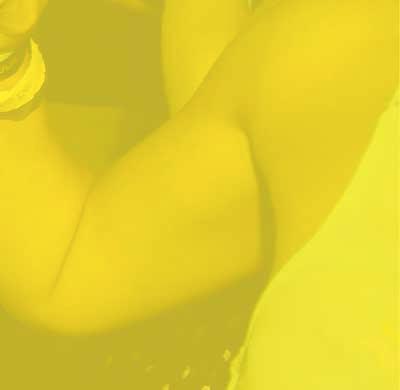
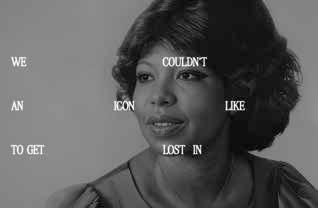
Agency: SRMG Labs, Riyadh
Client: Billboard Arabia, Riyadh
Lions: Gold (Audio and Radio); Silver (Audio and Radio) Jomana Alrashid, CEO of SRMG, said, “This Gold at Cannes Lions is a monumental milestone for SRMG Labs and for the region’s creative voice. In just two years, Labs has become one of Saudi Arabia’s leading creative agencies. Earning such rare recognition speaks volumes about the calibre of our work, the talent behind it, and SRMG’s commitment to reimagining the creative landscape globally.”

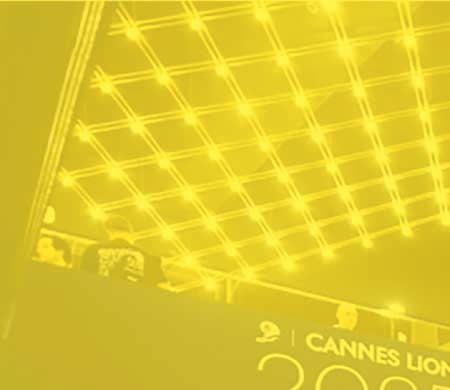

Agency: BigTime Creative Shop, Riyadh
Client: Riyadh Season
Lions: Gold (Entertainment Lions for Sport); Bronze x 2 (Film Craft, Film)
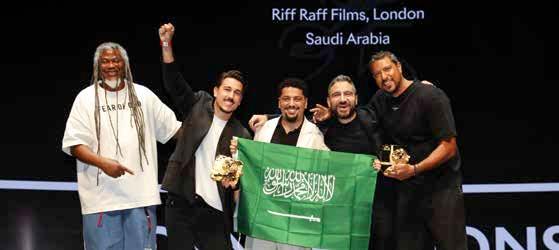
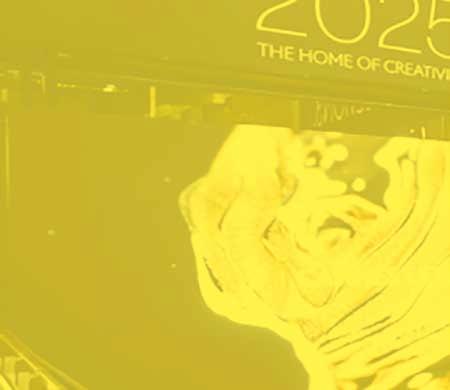
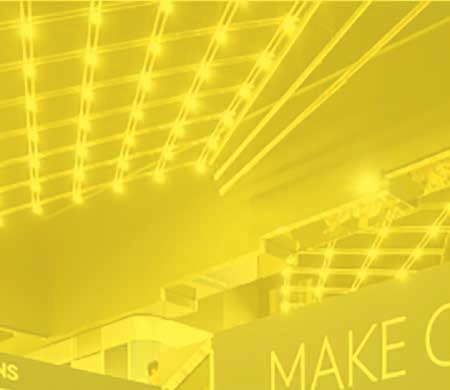
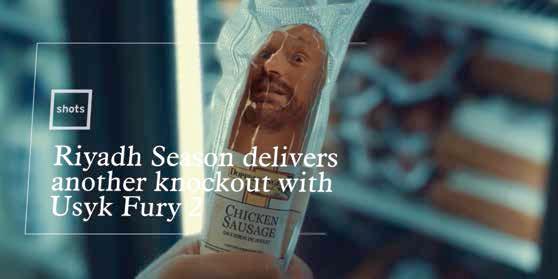
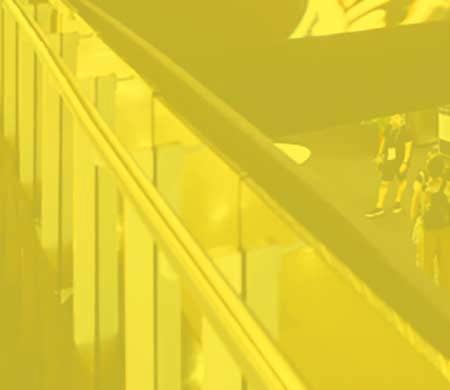
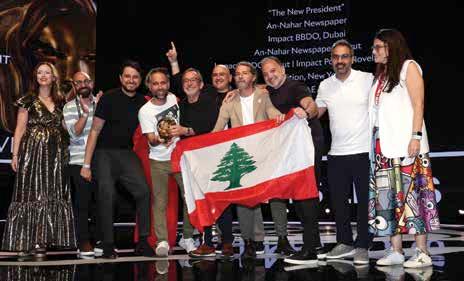
Agency: Impact BBDO, Dubai
Client: Annahar Newspaper
Lions: Gold (Creative Strategy); Bronze (Creative Strategy)
Dani Richa, CEO and Chairman, Impact BBDO, said, “Winning MENA Regional Network of the Year at Cannes Lions for the seventh consecutive time is truly a first. It’s an achievement that brings both a sense of relief and immense pride. We owe this incredible milestone to our amazing clients and our dedicated team.”
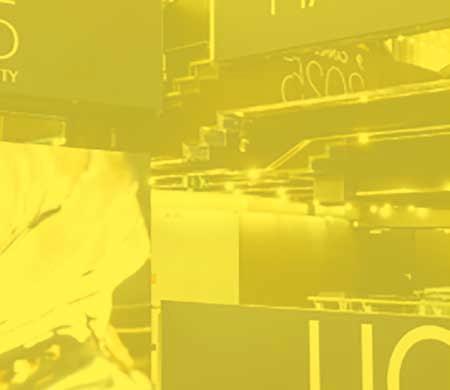

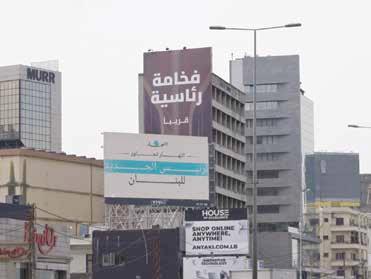
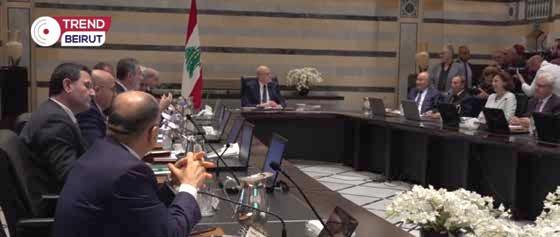


Agency: VML Riyadh
Client: Hungerstation
Lions: Silver (Digital Craft); Bronze x 2 (Health & Wellness, Outdoor)
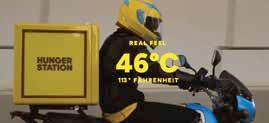
Agency: VML Dubai
Client: Hungerstation
Lions: Silver (Creative Commerce); Bronze x 2 (Brand Experience & Activation, Creative Data)

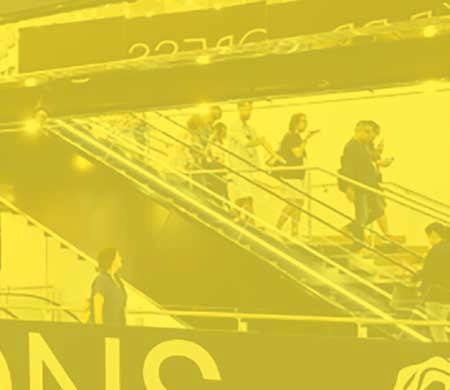
Agency: SRMG Labs, Riyadh
Client: Billboard Arabia, Riyadh Lion: Silver (Design)

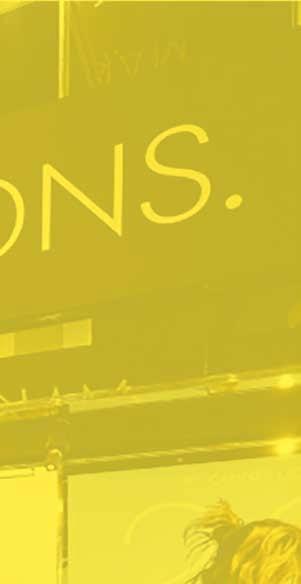

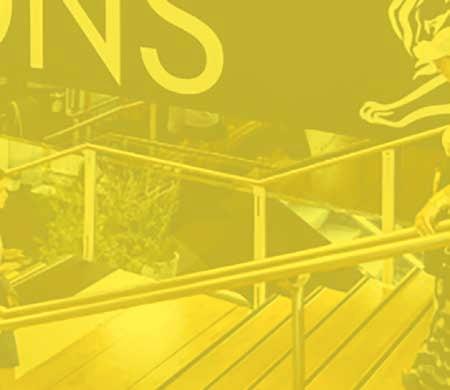
Agency: Impact BBDO, Dubai
Client: Annahar Newspaper
Lion: Silver (Creative Strategy)
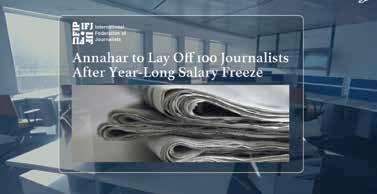













READ BETTER
Agencies: FP7 McCann, Dubai / McCann, Bristol
Client: Waterstones
Lions: Bronze x 2 (Digital Craft, Film)
SAFE AT 3AM
Agency: VML Dubai
Client: Dubai Tourism Lion: Bronze (Direct)

Agencies: Impact BBDO, Dubai / AdPro& Jordan
Client: Capital Bank Lion: Silver (Print & Publishing)
NOT FOR FIRST DATES
Agency:FP7 McCann Dubai
Client: McDonald’s Lion: Bronze (Outdoor)
SPONSORED BALLS
Agency: FP7 McCann Dubai
Client: Testicular
Cancer Society
Lion: Bronze (PR)
THE GREAT INDIAN DUNK
Agency: LEO Dubai
Client: NBA India Lion: Bronze (Print & Publishing)
CHILD WEDDING CARDS
Agencies: Impact BBDO, Dubai; Karma Kollective, Karachi; and Shiny Toy Guns, Karachi
Client: UN Women
Lion: Bronze (Creative Strategy)
EVERYTHING OR NOTHING

Agency: BigTime Creative Shop, Riyadh
Client: Riyadh Season Lion: Bronze (Film Craft)


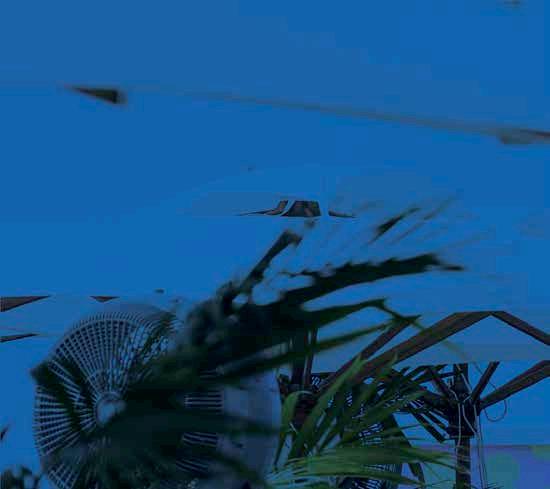
Here are all the Grands Prix-winning campaigns from the Cannes Lions International Festival of Creativity 2025.

BRAND EXPERIENCE AND ACTIVATION, DESIGN, AND DIGITAL CRAFT
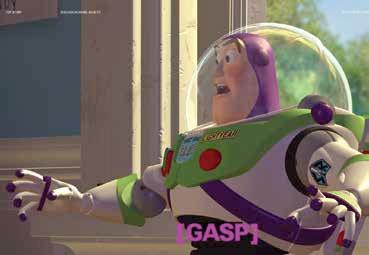
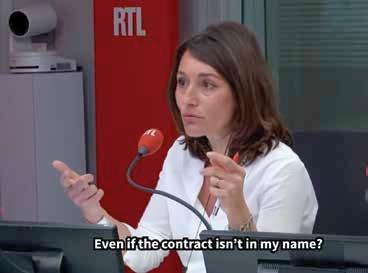
GRAND PRIX FOR GOOD, LIONS HEALTH GRAND PRIX FOR GOOD

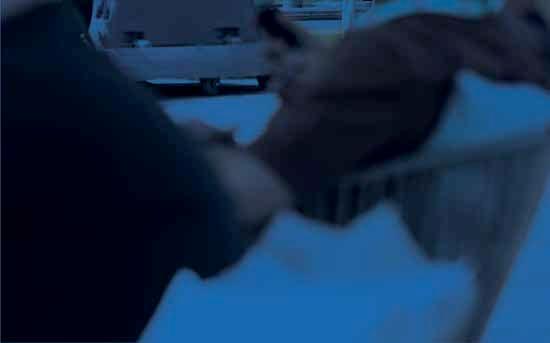
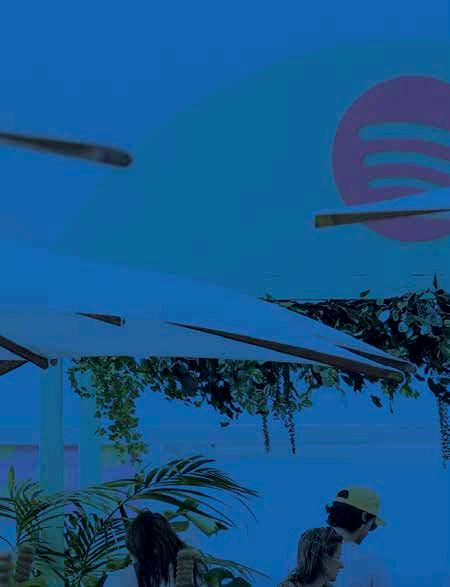
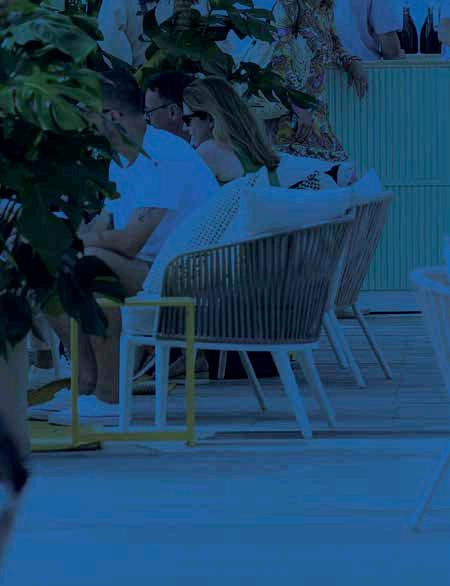
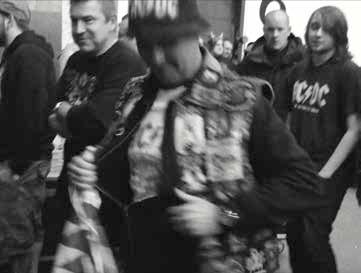


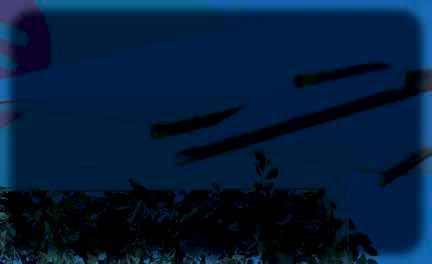
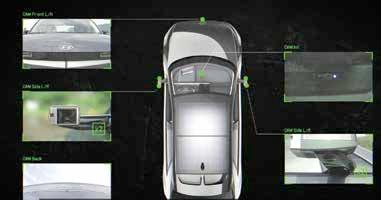
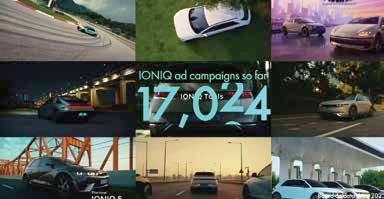

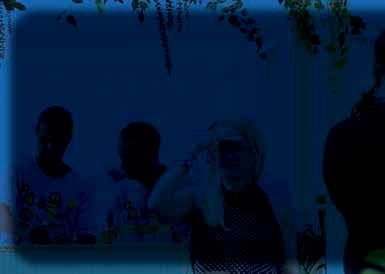
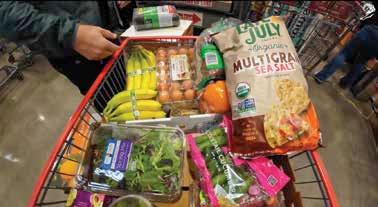



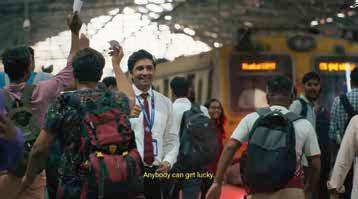

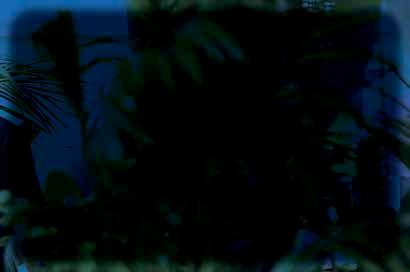


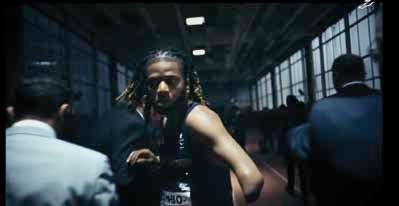

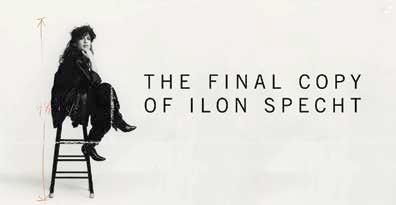
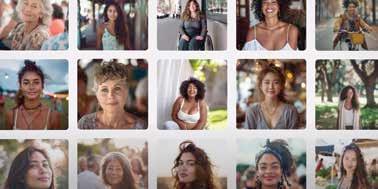


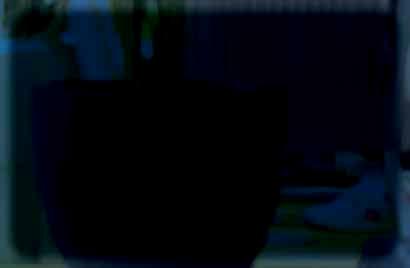

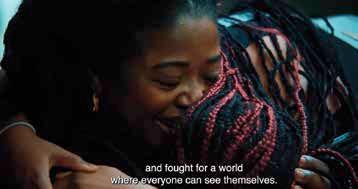


























































































































































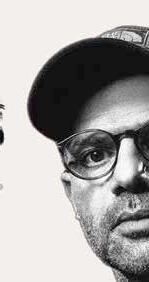
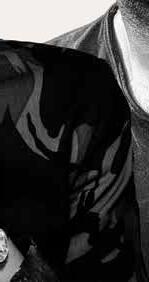



ENTERTAINMENT
LIONS FOR MUSIC






ENTERTAINMENT
LIONS FOR GAMING







ENTERTAINMENT
LIONS FOR SPORT
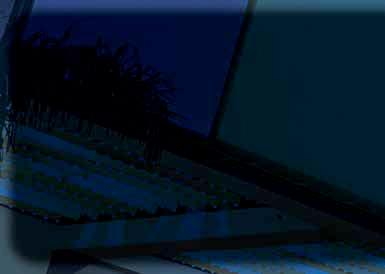




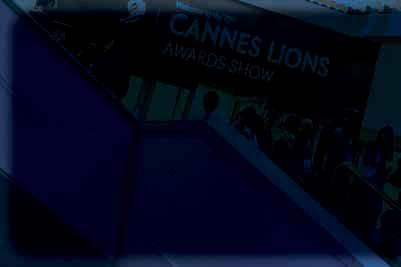

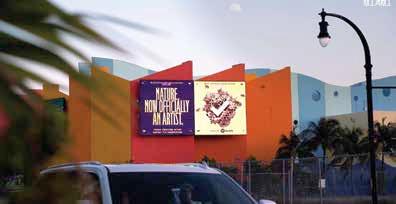


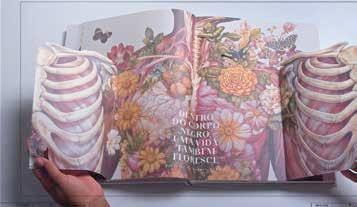

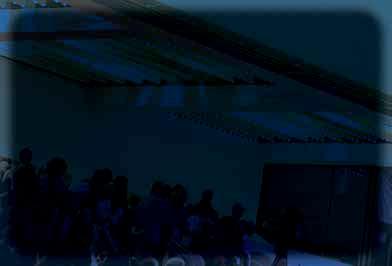
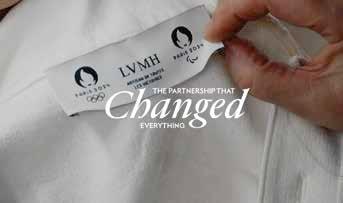




















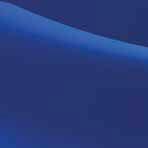



























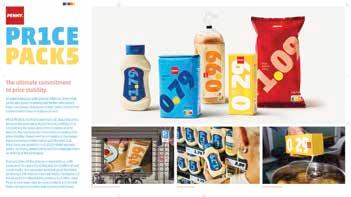

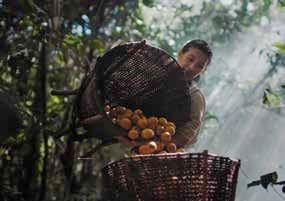

HEALTH AND WELLNESS, SOCIAL AND CREATOR



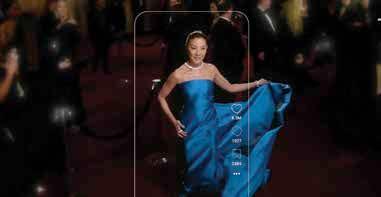

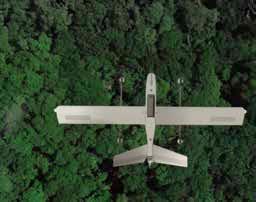


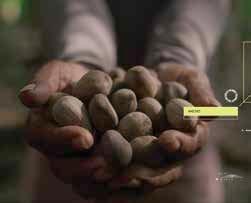

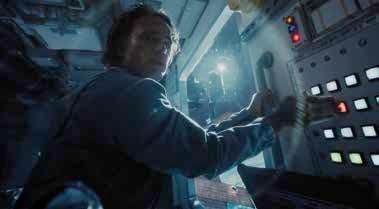

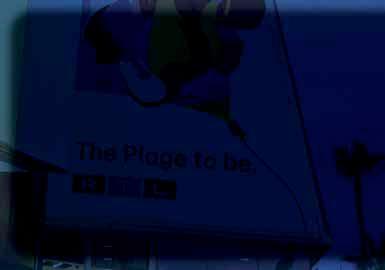

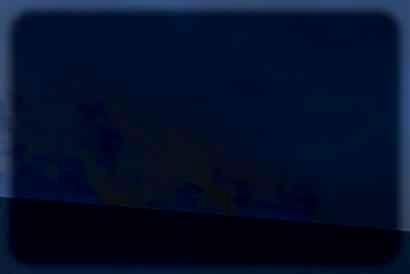

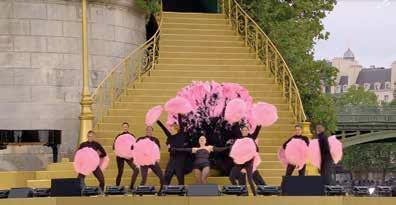



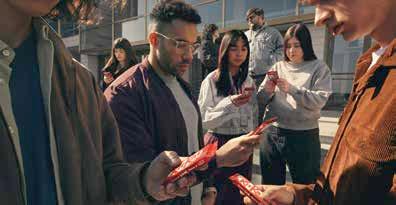


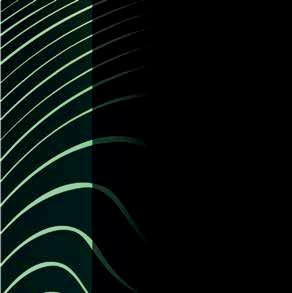

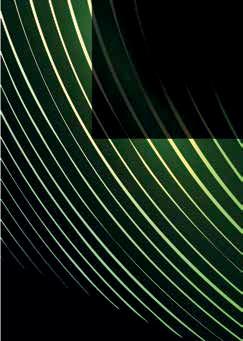


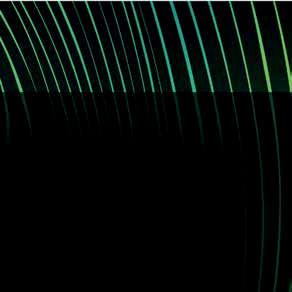
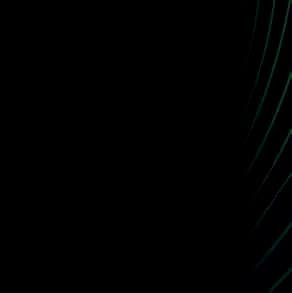











At Cannes Lions this year, ‘storytelling’ was everywhere. But as Kiran Jay Haslam, CMO, Diriyah Company, wisely pointed out, “If you don’t have something worthy of sharing, you don’t have a story.” It’s a reminder that words alone don’t move markets. Ideas with impact do.
That shift from buzzwords to real-world challenges set the tone for our roundtable at Cannes Lions hosted by UK Advertising and Athar Festival. Leaders from both the UK and Saudi Arabian advertising industries came together to discuss the theme ‘Redefining Creative Effectiveness for a Growing Market’. Yet, as so often happens when a conversation hits the right note, the discussion evolved into something deeper: an honest appraisal of where our industries stand and where we need to go together.
Saudi Arabia’s advertising sector is undergoing an intentional transformation, driven by Vision 2030, boosted by strategic investments and a digitally native population. This is fuelling a new generation of creatives shaping a globally recognised industry, with Saudi agencies making their mark internationally, including 12 Lions at Cannes this year.
When the moderator, Campaign Middle East’s Anup Oommen, asked how the group defines true effectiveness, the consensus was that creative effectiveness means the tangible impact creative work delivers against clear objectives such as driving growth or strengthening brand equity.
However, the question also led the group to explore ambition and the challenges this poses for both markets. Talent was a key theme, not in terms of creativity or enthusiasm, which Saudi has in abundance, but in strengthening critical thinking skills to consistently deliver world-class work.
Ian Fairservice, Chairman of Athar Festival, and Managing Partner and Group Editor-inChief, Motivate Media Group, underscored the importance of direct access to global mentors, opportunities and capabilitybuilding for both markets, keeping in mind today’s cross-cultural creative economy.
It was noted that critical thinking is a particular strength of the UK sector, highlighting an opportunity for collaboration to help develop this capability further in Saudi Arabia. The challenge lies less in potential and more in building the right support systems to help that potential thrive.
This is where UK–Saudi collaboration can be transformative. Yet, as Mohamed Al Ayed, Vice Chairman Athar Festival and CEO TRACCS pointed out, moving beyond ‘knowledge transfer’ to a model of shared learning is crucial. That linguistic shift signals mutual respect, cultural exchange, and sustainable partnership.
As Jason Foo, CEO BBD Perfect Storm put it during the discussion, “Saudi’s ambition and creative energy are undeniable. The UK brings experience navigating global markets and building brands. The best partnerships are where ideas flow both ways.”
Jane Asscher, CEO, 23red and VP, frog UK, part of Capgemini Invent, added, “We’ve spent years refining how we pitch and collaborate with clients, but that’s not a one-way export, it’s something we can open up, share, and learn from our colleagues in the Middle East too.”
UK Advertising’s Aisling Conlon reveals the UK and Saudi Arabia’s partnership for growth.
From my perspective as International Director for UK Advertising, this partnership offers a unique opportunity to bridge talent and knowledge between our markets. Our focus is on building longterm capability and confidence on both sides, ensuring creatives and marketers have the platforms and mentorship needed to thrive. This positions UK Advertising not only as a global creative hub but as a committed partner in the Kingdom’s journey toward creative excellence.
As the UK and Saudi markets grow, sustaining creative excellence requires ongoing collaboration and dedication. This year, UK Advertising returns to Saudi Arabia as a partner of the Athar Festival, bringing more than 20 senior UK leaders. This reflects a strategic commitment, not just a delegation visit, to deepen partnerships, foster shared learning, empower emerging talent, and support the Kingdom’s vision for a worldclass creative economy. We look forward to unveiling initiatives that showcase creativity’s measurable impact both culturally and commercially.
Creativity’s return on investment is clear. Beyond elevating brands, it is essential for attracting and retaining top talent. In a competitive global market, investing in creativity shows ambition and a commitment to innovation and sustainable growth. It builds cultures where talent thrives, brands connect meaningfully with audiences, and industries evolve resiliently.
The roundtable ended not with answers, but with alignment. Across both markets, there is a shared belief that creativity is most powerful when it is inclusive and forward-thinking, driving real business and cultural impact. Looking ahead to the Athar Festival, I’m optimistic about what we can build: not just stories, but stories that matter.
By Aisling Conlon, International Trade Director for UK Advertising, Advertising Association



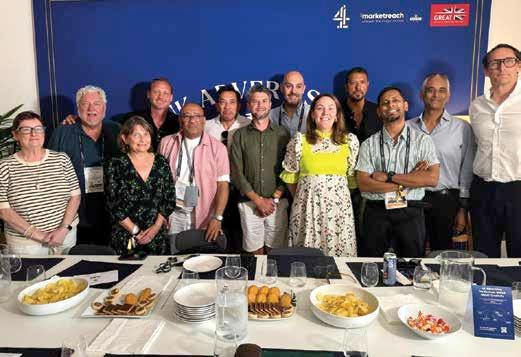





As Cannes Lions 2025 wrapped, I found myself thinking less about the spectacle and more about the quieter signals hinting at where our industry is headed. Amid the scale and energy, some signs were too frequent to ignore.
I approached this year’s Lions with curiosity and a dash of scrutiny, waiting for that inevitable “Aha!” moment.
What surprised me wasn’t a specific piece of work, but the conversations being had around the work. Conversations that felt more grounded, more aware and more honest.
One of the most personally significant shifts was the regional presence. Not just visible, but active – leading discussions, earning recognition and taking seats at the highly coveted jury tables. What once felt like emerging representation now feels like confident, fully-fledged contribution.
The unmissable public sector presence – underscored by the historic appointment of a government representative amongst the jury –alongside brand-led storytelling and bold creativity from emerging agencies, reflected just how far the regional creative infrastructure has come, and how much further it can go when paired with consistent ambition.
TECHNOLOGY, TEMPERED
Artificial intelligence (AI), predictably, was everywhere. But unlike recent years, the tone was different – less celebratory, more considered. The best work didn’t focus on what AI can do, but on what it should do.
Dove’s ‘Real Beauty Redefined for the AI Era’, a Cannes Lions Media Grand Prix winner, stood out for that reason. In partnership with Pinterest, Dove retrained algorithms to surface inclusive, diverse beauty. It wasn’t a gimmick; it was a correction. Quietly powerful in intent and a reminder of what happens when the systems shaping our perceptions don’t reflect our values.
It made me think of Buzzman Paris’ ‘Love Your Imperfections’ for Meetic, work that embraced ‘realness’ a decade ago, long before AI was trending. Authenticity isn’t new, but it’s now more valuable than ever.
Not all AI stories were positive. Several high-profile withdrawals were a sobering reminder of how AI can blur the real and the manufactured. As creative tools evolve, so must our standards of transparency.
It’s no longer just about what a campaign achieves, but about whether the story reflects truth. That, to me, was the central theme of the festival: creativity at its best is not just innovative; it’s honest.
CREATIVITY, STILL PERSONAL
Some of the most impactful moments didn’t come from the work on stage, but from the people behind it. One of the
most notable talks I attended was David Droga’s. As he transitions out of his CEO role at Accenture Song, he spoke with clarity about the need for care in creativity –that it’s not just about being clever but about standing for something.
Then there was a quieter moment, a writer reflecting on writing as a deeply personal act. About hearing your own voice in a script and tapping into your own nostalgia to bring it to life. That idea echoes across everything we do: decks, scripts and layouts.
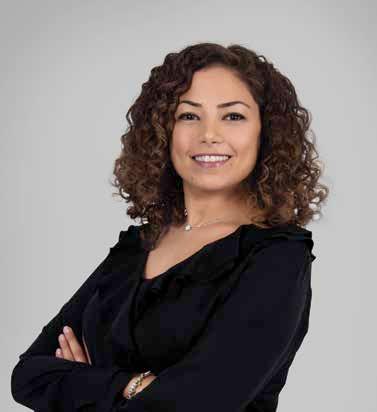



DCT Abu Dhabi’s Nada Assaf reflects on the difficult answers revealed at Cannes Lions 2025, and how much harder and more valuable authenticity has become.
When someone taps into their distinct voice, I can hear them presenting it while I flip through slides just before midnight, after the day winds down and I can give the slides the attention they deserve. The very act of trying to connect needs to be amplified, respected and given space to shine.
If I left Cannes thinking about one thing, it’s how much harder and more valuable authenticity has become. In a world of cheap production and fragmented attention, the things that cut through are the things that feel true.
That doesn’t mean everything must be quiet, understated or a selfie video. People still want to dream, and in integrated campaigns with high-value productions, how we ask people to dream matters.
Not every campaign needs to be profound but, consistently, the best ones seem to start with simple intentions: say something honestly, say it well and offer the audience something back – a laugh, a tear, a revelation, a dream or perhaps an impulse to call a loved one.
Cannes didn’t offer easy answers. But it did give us space to reflect on where we’re headed as an industry, as creatives, and as people in a field that still fundamentally depends on human emotion.
Technology will keep evolving. Platforms will shift. But our ability to care about the work, the audience, and the values behind the message, is what will continue to matter the most.
By Nada Assaf, Campaigns Section Head, Strategic Marketing and Communications Sector, Department of Culture and Tourism – Abu Dhabi (DCT Abu Dhabi)
Cannes Lions 2025 felt less like a festival of fireworks and more like a stress test of truth. Serving on the PR jury, I spent long nights debating whether ideas deserved a Lion once the gloss was stripped away. That perspective shaped seven lessons I carried home, and each one speaks to where brand storytelling is heading next.
Being believed is now worth more than being seen. On day one, Apple’s Tor Myhren warned that AI will not save advertising unless humans raise the standard. Later, our jury dropped a high-gloss submission the moment its impact numbers proved to be guesses. The work that climbed to Gold arrived with proof the public would recognise as real. In an era of deepfakes and automated hype, authority must be earned the hard way.
Authority grows fastest when you bring credible partners on board. Dove’s ‘Real Beauty’ campaign won the Grand Prix in the Glass: The Lion for Change category at the Cannes Lions International Festival of Creativity 2025 because NGOs, creators and media figures all shared ownership of the message. India’s Lucky Yatra, this year’s PR Grand Prix, paired Indian Railways with broadcasters and a lottery mechanic that turned humble train tickets into national news. The biggest spend wasn’t media; it was relationship-building.
Everyone praises diversity but few show it working in real time. Our jury did. We came from five continents and every corner of communications, so each case was cross-examined for cultural nuance, ethical red flags and lived experience I could never see alone. Early debates felt slower until they didn’t.
By the time we reached the Grand Prix shortlist, the work had survived every angle of attack. When the chair of the jury called for a show of hands – 10 hands rose in 10 seconds. Many voices didn’t create gridlock; they created confidence. If you want fast, decisive calls, fill the room with people who see the world differently.
Creators underscored the same truth. In government, you never put a spokesperson on stage without a clear brief. The rule now applies when you hand your story to an influencer. The Social and Creator Grand Prix, ‘Vaseline Verified’, proved it. TikTok dermatology voices received the brand’s lab results up front and freedom to film in their own style – sometimes playful and sometimes clinical. Safe hacks earned a ‘Verified’

The UAE Government Media Office’s Khaled AlShehhi shares his perspective as the first government sector representative on the Cannes Lions jury in the festival’s 72-year history.
‘‘IS IT CULTURALLY URGENT? CAN IT MOVE WITHOUT PAID SUPPORT? WILL IT SURVIVE FACTCHECKING TOMORROW?’’
toward full carbon disclosure in supplier tenders; marketing briefs won’t lag far behind, so this ‘radical transparency’ will reach our tender desks sooner than many expect.
Elsewhere, analysts conceded that a single universal metric for marketing is fantasy; brands must embrace multiple measures and show their working. Sunlight is expanding, and anything opaque –whether carbon footprint, fees or research methods – will soon look suspect.
The Design for Behavioural Change Lion also earned the spotlight. Lucky Yatra used the chance to win a trophy, showing how it altered commuter habits. Another winner, ‘Caption With Intention’, rewired video captions so deaf viewers could feel suspense, humour and irony. Ideas that change what people do – not just what they remember – now set the creative bar.
Pure PR success came from ideas born for conversation, not media spend.
Nordea Bank’s ‘Parental Leave Mortgage’ let parents pause repayments during leave and spread through press coverage without a hero film.
In the jury room we pressed every contender with three questions: Is it culturally urgent? Can it move without paid support? Will it survive factchecking tomorrow? Campaigns that cleared that bar soared; those that relied on rented attention faded.
stamp while dangerous myths were debunked by the same creators. Because the message arrived through trusted voices, followers believed it instantly and spread it widely. Credibility that you can’t buy was amplified to millions in minutes. The same demand for openness echoed on the sustainability stage. Ad Net Zero used Cannes to publish its latest carbon-measurement framework and called on brands to release emissions data as openly as financials. Gulf regulators and mega-projects are moving
So, what should marketers in our region take from Cannes? First, prove impact before you proclaim it, because audiences now inspect the footnotes. Second, invite unlikely partners –creators, regulators, even rivals – because coalitions unlock reach that money cannot buy. Third, design ideas to shift behaviour, not merely impressions; when habits change, headlines follow.
Judging Cannes was a reminder that creativity and public trust are now inseparable. Ideas succeed when they act like good policy: evidence-based, coalition-built, transparent and human. That was the standard we applied at two in the morning in the jury room, and it is the same standard audiences apply in daylight.
By Khaled AlShehhi, Executive Director of Marketing and Communication, UAE Government Media Office














SDéjà Vu’s Manasvi Gosalia shares what it takes to be a guardian of craft, an advocate for authenticity and an arbiter of ideas.
erving as a Cannes Lions 2025 juror is more than just a prestigious honour, it is a cultural responsibility. You help define what ‘world class creativity’ means today, setting the standard for the year ahead.
High-impact creative campaigns gain a global stage, while brands and agencies benchmark themselves accordingly. The ripple effect influences budgets, storytelling approaches and, even, the role of humour or purpose in campaigns.
After countless hours of online judging, you finally step into the room alongside fellow top visionary leaders.
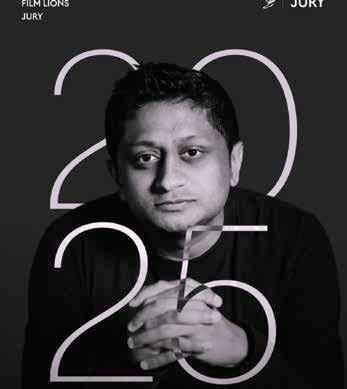
While the festival outside basks in beautiful sunny days and inspiring talks unfold on different stages, you find yourself immersed in hours of film screenings and intense conversations, each film sparking debates from vastly different perspectives.
We noted a resurgence of humour, which served as a welcome counterbalance to global tensions, with handcrafted authenticity favoured over slick, over-produced polish.
Social impact also took centre stage –with public health and business performance with emotional resonance proving to be essential.
THE EXPERIENCE
Imagine stepping into the jury room: the air crackles with debate. Hundreds of short- and long-format films play in swift succession ranging from 15 seconds to 90 minutes – each one vying for attention. Here’s a glimpse into that extremely immersive process:
“A STORY WITH HEART AND INSIGHT CAN OFTEN OUTPERFORM A BIG-BUDGET EXECUTION.’’
Volume and variety
As a juror, you review stacks of film submissions, from high-profile brand spots to indie guerrilla productions. You judge everything from clever humour and emotional storytelling to brand integration and cultural nuance, with creativity at the core.
Deliberation and diversity
Jury room discussions are rich and rigorous.
Global teammates challenge assumptions such as “That made me laugh, but would it work in another country too?” ensuring campaigns are evaluated holistically.
This year’s diverse representation helped flag cultural blind spots and elevate authentic narratives.
A story with heart and insight can often outperform a big-budget execution. In the end, it’s all about how powerful and moving each creative piece can be.
After shortlisting dozens of films, jurors debate for hours over which pieces deserve Gold, Silver and Bronze Lions, or the rare and coveted Grands Prix.
The goal is to select a slate that reflects excellence and impact, and is aesthetical and practical on a global scale.
When the winners are finally unveiled, applause erupts. There’s pride in consensus, relief in closure and an unmistakable buzz that only comes from witnessing boundless creativity.
Cannes Lions 2025 captured the essence of global creativity with humour, humanity and hard-earned impact triumphing over embellishment.
Serving on its Film Lions jury meant being part of a cultural cross-section: as a guardian of craft, an advocate for authenticity, and an arbiters of ideas that moved audiences, markets and minds.
All in all, the nights’ rest at the iconic Carlton Cannes made it all worth it. Definitely a week to cherish.
By Manasvi Gosalia, Executive Producer, Déjà Vu
Great brand experiences don’t just show up – they stay with you. They stir something, shift something and leave something behind. Judging the Cannes Lions in Brand Experience and Activation this year was a powerful reminder of that.
In a room full of bold opinions and sharp minds from around the world, we sifted through hundreds of campaigns in search of that rare magic – ideas that went beyond flash to deliver feeling; ideas rooted in local truth yet expressed with a clarity that transcended borders. The kind of work that doesn’t just speak to people but speaks for them. Work that feels unmistakably human.
For me, what separates a campaign worthy of a Gold Lion is the magic formula of emotion and culture – combined with the ability to drive meaningful action. A winning campaign doesn’t just show up in people’s lives; it earns its place, leaves a mark and makes the brand unforgettable.
The best work also proves that creativity is a business driver. We looked for ideas that didn’t compromise one for the other – that used creativity to unlock relevance, resonance and results.
This year, several ideas rose to the top. ‘Caption with Intention’ stood out as a campaign that deservedly won the Grand Prix across multiple categories. What struck me was its simplicity and brilliance – an idea hiding in plain sight. By introducing a dynamic subtitle system, it completely reshaped the viewing experience for the deaf community. It’s a powerful example of how a strong creative idea can influence an entire industry and redefine how we consume content.
‘Price Packs’ for PENNY, by our German colleagues, also left a strong impression. It was a campaign that proved how bold ideas can drive real business results. The campaign used its creativity to champion price stability – making the brand a beacon of trust at a time when it really mattered. Not an easy campaign to execute, but the agency and client pushed it through and the results spoke for themselves.
Then came ideas such as ‘Acko Tailor Test’, which turned a common habit into a moment of health awareness, as well as ‘The Kimberly Price’ and ‘The Gulf of Mexico Bar’ – rooted in deep cultural context. These ideas demonstrated how simplicity, bravery and a deep understanding of people’s behaviour can turn even small moments into something powerful.
What surprised me this year was how many brands embraced ideas that went beyond performance metrics and leaned into cultural impact. The best campaigns didn’t just sell – they stood for something. They refused to treat digital and physical spaces as separate silos, creating seamless ecosystems where every touchpoint felt connected and intentional. It was less about being ‘omnichannel’ and more about making connections feel truly human.


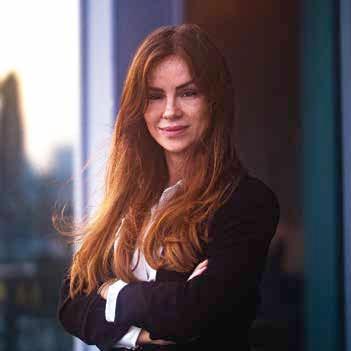
Serviceplan Group Middle East’s Natalie Shardan invites brands to lean into bold ideas, stay rooted in culture and create connections that matter.
In contrast, one thing became very clear: too many campaigns still confuse visibility with value. A flashy activation can win attention and clicks, but if it doesn’t carve out a meaningful role for the brand in people’s lives, it won’t last. True brand experience is about resonance, not just reach. In the jury room, we were wary of ideas that felt retrofitted for the category –ideas where brand experience was just a superficial layer, rather than its core.
RISK OF PLAYING IT SAFE
Judging this category reminded me why we do what we do. In an age of automation and data overload, creativity still matters – now more than ever. The power of a simple, sharp idea to move
people, shift perceptions and drive real-world results is still our biggest industry asset.
If you want bold activations, you can’t be risk-averse. The best brand experiences are strategic, but they also dare to be human. Let go of the safe approach. Play the long game. People remember how you made them feel –not your click-through rate.
For brands and marketers across the Middle East, this is an invitation. An invitation to lean into bold ideas, stay rooted in culture and create connections that matter. And that’s how we win, long after the campaign is over.
By Natalie Shardan, Managing Director, Serviceplan Group Middle East
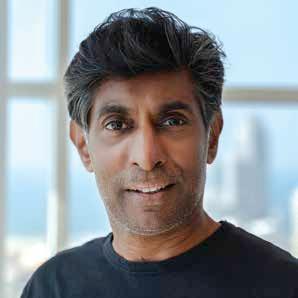
Livingroom Dubai’s Seyoan Vela shares his two cents on the balance between big, bold campaigns that drive business outcomes and have a social impact.
I’ve got nothing against babies or rainforests but, in all honesty, they seem to do less for me than for my fellow judges. I was on the Innovation jury with some amazingly talented people who were intelligent, insightful and articulate. But they seemed to earnestly believe we should be saving the world more than selling to it.
I know that sounds shallow but that’s why I work in advertising rather than for Greenpeace or the United Nations – not that they would have me.
That said, Cannes Lions 2025 showed me that both were possible. I saw campaign after campaign – including ‘Three Words’ by Axa, ‘Beer Retirement Account’ by AB InBev, ‘Drops of Hope’ by Kimberly-Clark, ‘Cars to Work’ by Renault – all of which combined meaningful purpose with increased sales.
I saw several campaigns where you could appreciate the long-term benefits of diversity, equity and inclusion (DE&I), knowing that these problems could only have been identified – let alone, solved –by people from a variety of different backgrounds. Great examples of this include ‘Caption with Intention’ for the Chicago Hearing Society or ‘Breastmilk Money’ for Herconomy, a digital bank in Nigeria.
Cannes Lions 2025 felt like creativity was back at the heart of the best marketing campaigns. Or at least creative thinking took centre stage while performance marketing and adtech were back to lurking ominously in the shadows.
Metaphorically speaking, the big tech companies and media conglomerates were back to being the rich men in suits buying sparkling beverages in the club while advertising reverted to its traditional role of being the pretty ones enjoying these beverages for free. This year, advertising finally reclaimed the dance floor leaving the tech companies to enjoy the VIP booths.
It was a much-needed antidote to all the talk about artificial intelligence (AI) because, at least for now, it shows there is still a valid place in business for divergent thinking.
This year, across most juries, you could really notice the supremacy of the idea. Maybe it showed a growing maturity of the awards industry, or maybe it was a reflection of more diverse juries – not only creatives but also strategists, client servicing specialists and marketers.
However, executional craft played second fiddle to brave thinking. There was still great craft, but it was built on the solid foundation of great ideas. There was an attention to detail, but the best work executed it at scale – big, bold campaigns that were often years in the making.
The unique quirk of the Innovation jury was that the shortlisted work was presented on stage, in person. And this is where the rubber really hit the road. Chief marketing officers (CMOs) of household brands such as Phillips and Apple pitched their work along with their agency. And 10 minutes of passionate
‘‘AI MAY BE HELPING TO GAME SOME CASE STUDIES, BUT IT TAKES LITTLE EFFORT TO UNCOVER FABRICATIONS.’’
presentation can do more than a two-minute case study could ever do.
In-person presentations with the client also made it hard to scam the work and exaggerate the results. Unfortunately, this was another hot topic of conversation in the week following Cannes. My personal view is that there is far less of a scam across both regional and global awards. I always felt that ‘gaming the awards’ was misguidedly thought of as just a bit of fun – part of the game. But now there are a lot more people online and in-person willing to call it out.
Judging is intense. 12 hours locked in a dark room with unhealthy snacks and far too much soda. But my fellow jury members and I still took the time to question the validity of each idea – doing the necessary background checks when presented with sceptical information. AI may be helping to game some case studies, but it takes little effort to uncover fabrications.
So, to conclude, my personal observations from the jury room are: AI is here, but using AI is not an idea –and it was surprising to see the number of entries that seemed to think it was. Americans were everywhere. Maybe it’s because they’re the people with the most money or maybe they just wanted to get out of their country for a week, but it felt like at least half the attendees were from the US.
So were clients. Cannes Lions used to be about creatives and production companies. Now clients are central to every aspect –from the speeches to the jury.
Ambitious ideas that use creative thinking to solve business issues were in general winning the big awards. Ads about those ideas were sometimes good but just being a good ad didn’t seem enough.
South American creativity, especially from Brazil and Colombia, is having its moment. They showed what can be done and how to have the most local relevance, irrespective of controversies surrounding certain topics.
Creativity is becoming more democratised. Agencies from Denmark and Thailand, Puerto Rico and Nigeria won big.
And those are my two cents.
By Seyoan Vela, Chief Creative Officer, Livingroom Dubai








Campaign Middle East, in partnership with The Vantage, hosted its first-ever Campaign Cannes MENA Mixer at the 72nd Cannes Lions International Festival of Creativity. The event brought together more than 50 brand and agency leaders, representing the Middle East’s media and advertising industries on the global stage. Inspired by growing participation from the region at Cannes Lions, the event offered an exclusive space for these leaders to catch up, celebrate and connect midway through the weeklong festival.
“The MENA region’s involvement and participation at Cannes has grown year after year, and it was only appropriate that there was an opportunity for jurors, clients, agencies and partners to all convene together at the advertising world’s flagship week,” said Manoj Khimji, Managing Director, The Vantage, who was a title sponsor of the event. “We were delighted to bring this to life with the support of Hearst Global Solutions in 2025.”
1. Nadeem Quraishi, Publishing Director, Campaign Middle East (L) and David Fregonas, Managing Director, Accenture Song. 2. From left, Firas Ghannam, Executive Creative Director, VML; Ahmad Chatila, Director of Brand and Communication, HungerStation; Nassib Boueri, CEO – MENA, VML; Sunil John, Senior Advisor – MENA, Stagwell; Ian Fairservice, Managing Partner and Group Editor-in-Chief, Motivate Media Group.
3. From left, Manoj Khimji, Managing Director, The Vantage; Nadeem Quraishi; Siddarth Sivaprakash, Head of Brand & Marketing – Home Centre, Landmark Group; Mitin Chakraborty, Head of Marketing, Babyshop – Landmark Group; and Anup Oommen, Editor, Campaign Middle East
4. Leonardo Borges (centre), ECD, Havas Middle East interacts with a endees.
5. Abdulrahman Saud, CEO, Bassmat.
6. Steve Payne, Business Marketing Director, Hearst Global Solutions; Gianluca Ena, SVP, Hearst Global Solutions; and Faye Jackson, Head of Hearst Global Solutions pose for a photograph with leaders from Campaign Middle East and The Vantage.
7. A endees network at the Campaign Cannes MENA Mixer event.
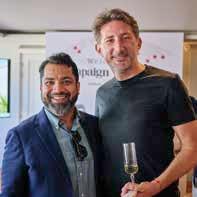
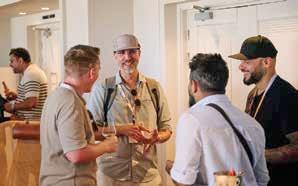


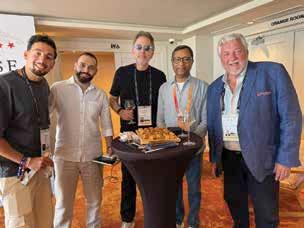
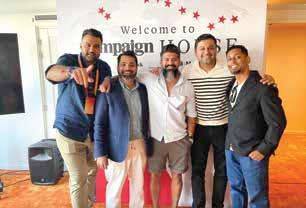
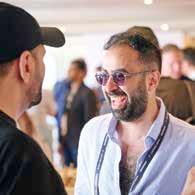
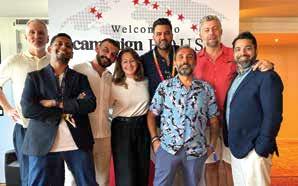

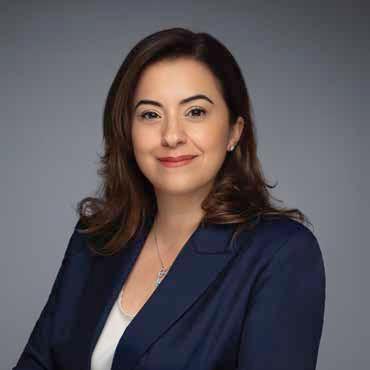
Rules have always been an integral part of marketing. Stick to the guidelines. Maintain uniformity. Focus on the hero, substantiate with some science.
In the past, creatives were asked to be original, but within the rules. One of the most important rules, though, went well beyond. It was about staying in your lane. Focus on market share or brand positioning, but don’t be controversial. Stick to commercial principles, branded as a marketing mix, which are words that began with P. First, there were four, then seven. Sell, sell, sell. Lather, rinse, repeat.
As consumerism drove market expansion, new segments were revealed, and the number of competitors increased. The media landscape, once dominated by a few, was now many. The rules that governed the old were no longer sufficient for the new. Change is good.
Now, new generations of marketers demand a new playbook. Branding has a new meaning, and guidelines are no
longer rigid. But beyond all that, the cardinal rule of staying in one’s lane is an old-school principle.
Brands have access to so much data and insights that it would be almost remiss not to address the points that stand out just because it hasn’t been done in the past.
Handled with care, topics that were once considered taboo can be approached with empathy and understanding, helping to create awareness of a lingering pain point
“BOLD MESSAGING AND SUCCINCT STORYTELLING ARE DEMONSTRATIONS OF HOW COMMERCIAL INTERESTS CAN AUTHENTICALLY DRIVE AWAY SOCIETAL STIGMAS BY NORMALISING THEIR DISCUSSION.”
messaging and succinct storytelling are demonstrations of how commercial interests can authentically drive away societal stigmas by normalising their discussion, even within the context of brand communications.
Topics as diverse as social isolation, postpartum depression, women’s health and mental wellness are no longer just the realm of professionals or policy makers. These are themes that are no longer just whispered, but prudently addressed in the mainstream, based on solid insights and social relevance.
Industries are realising that to build a brand, it isn’t about talking to the masses but connecting to the individuals within these groups.
Authentic storytelling based on understanding is helping brave brands tackle real issues by demonstrating their deep-rooted understanding of their customers’ needs.
MENA marketers have become leaders in setting new benchmarks and creating campaigns that oftentimes outshine other regions – measured not only in shiny awards but in engaged, loyal customers.
Businesses in our region increasingly recognise that there are significant opportunities for using advertising as a platform for positive social change, to foster cultural dialogue and to advance society.
Brand teams have demonstrated that social conservatism is different to advancement and learning.
Storytelling has been a part of our societies going back as long as the historical record itself.
while encouraging engagement to bring subjects out into the open.
Some of the most meaningful brand communications I have seen lately have centred around what, not long ago, would have had the brand teams ostracised for even suggesting them.
Luckily, albeit slowly, there is an evolving trend of brands using campaigns to take a position on important issues, to address uncomfortable truths and to draw awareness to worthy endeavours. Bold
The tradition of taking a hero and crafting a narrative, strengthened by rational science validation, has evolved. Adding cultural relevance and removing some of the ‘hush-hush’ contributes to better engagement, increased brand equity and even purpose-driven policy impacts – and, lest we forget, a stronger financial impact on the societal balance sheet.
By Dina Jreissati, Group Executive Director – Marketing and Communications, Modon Holding, UAE
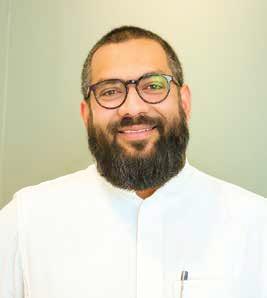


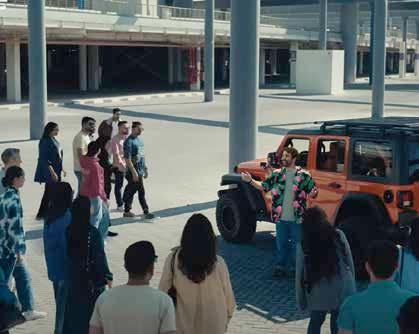

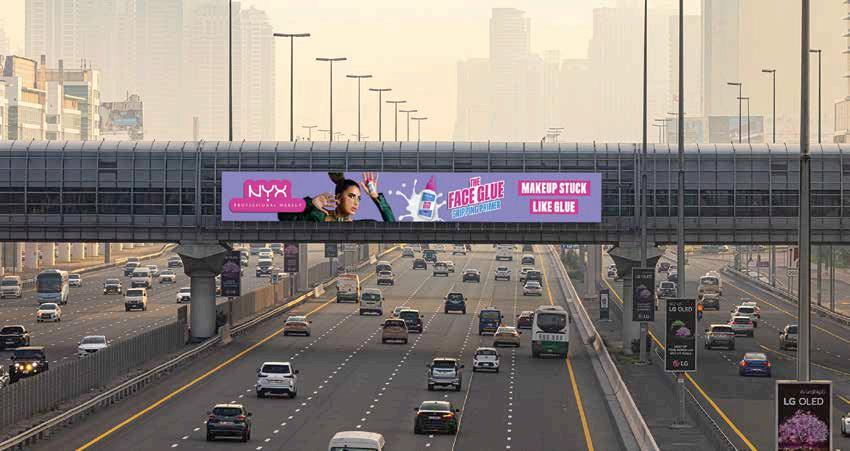


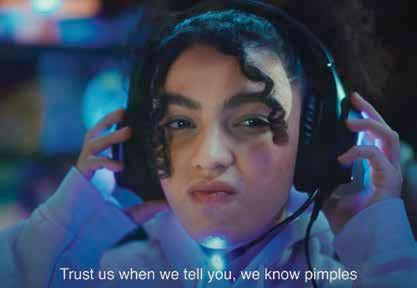
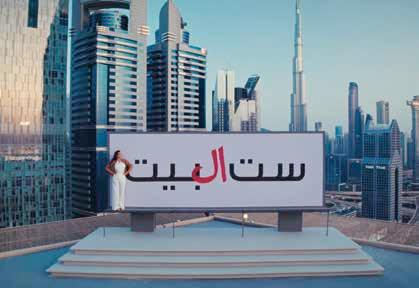

UAE-based Brand Director –Telecommunications
LEGO (1)

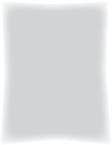
A warm, meaningful idea rooted in a powerful truth: dads value time more than things. The emotional clarity is strong. I’d love to see it evolve into build-it-with-him kits or seasonal rituals. There’s a great opportunity to turn this into a memory-making platform that families look forward to year after year.
DUBIZZLE (2)
There’s boldness here, and I respect the unapologetic tone with category confidence and a sticky line. But I found myself wanting a little more. The brand is sitting on rich data and diverse user journeys – there’s an opportunity to celebrate real stories, niche use cases or life milestones adding depth to the brand’s clear market leadership.
NYX (3)
Bold, eye-catching, and unapologetically expressive –the campaign turns fan energy into citywide visibility. What makes it work is how true it feels to NYX’s fearless personality, while cleverly tapping into Dubai’s love for over-the-top drama. Safa’s presence adds glamour and credibility.
HIMALAYA (4)
The tone here is refreshingly right – not preachy, not trying too hard. Just a gentle, well-observed mirror of what it’s like to be a teen. It sets the stage for a meaningful brand relationship. Building on this with peer-led content, simple skincare routines, or digital tools could turn it into a true go-to for teens.
L’ORÉAL (5)
Brilliant. This is standout brand work – respectful, clever, and deeply rooted in cultural insight. Reclaiming ‘Sit Al Bait’ with pride aligns beautifully with L’Oréal’s timeless promise ‘Because you’re worth it’ – in a way that feels fresh and locally meaningful. With continued storytelling, community programmes, or product integration, this could evolve from a strong statement into a lasting, values-led platform that truly lives across the region.
Partner – MENA, The Romans
LEGO (1)


Love the concept, wish the creative upheld it. I’ve read the extensive background – the endless research and data mining done to land on this insight, but I can’t see it in the final product. The notion of ‘don’t buy, build’ is nice. But it’s promoting LEGO, which you buy.
The art direction is classy, but the creative hasn’t truly captured the heart of the insight. I’m also not sure that brown wallets, slippers, grey mugs and power drills really reflect the modern dad – but maybe I’m projecting.
DUBIZZLE (2)
Another strong concept, with a tame execution. I like the core idea; I would have preferred a more ambitious creative execution. It feels like it does the job in terms of message penetration. I wouldn’t be sharing or re-running the spots, though.
NYX (3)
A bit absurd, finally. The story behind this strongly reiterates the impact of pasting ads across metro stations and on bridges over SZR. I can’t argue with that, but there’s little mention of the creative direction. That said, not many brands strike a culture chord in Dubai, and despite not being the audience, I respect that they’ve achieved that with this partnership. It’s absurd and we need more of that. But given the physical coverage, I’d have loved more from the creative direction.
HIMALAYA (4)
Feels like the brief, not the solution. The central concept of we don’t get you, but we get spots is interesting. But simply putting your audience in their natural habitat and calling it relevance isn’t enough. We need some proper depth, not another actor with a headset and controller. I think it misses the mark.
L’ORÉAL (5)
Powerful, if not a bit unoriginal. Three of the young Arab women at The Romans watched this and agreed that, though the film gets them pumped up and it’s strikingly shot (which it is), there isn’t enough negative sentiment behind the original phrase to make it truly meaningful. In fact, they felt that both ‘Sit Bait’ and ‘Sit Al Bait’, over time, have come to mean the same thing. From my perspective, we have seen so many campaigns hinge on the changing of Arabic letters to alter meaning, that the vehicle has lost all potency.
The LEGO Group
Title: Build It With Him Agency: Publicis Middle East, MSL Middle East
dubizzle
Title: Everyone Is On dubizzle Agency: Born28
NYX Professional Makeup
Title: The Face Glue Agency: Brandizer, Wavemaker, Hypermedia – a subsidary of W Group Holding, and Qraft
Himalaya
Title: We Know Pimples Agency: Amber Communications Production house: The Company Films
L'Oréal Paris
Title: Sit Al Bait Agencies: FP7 McCann Dubai, McCann Paris, Current Global MENAT
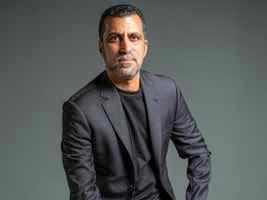
Managing Director of Cicero & Bernay Communication Partner
Marketing in its current state is becoming formulaic, with companies emphasising seamless communication while their messaging focuses more on transactions and consumption rather than connection, especially in digital and social media. However, Gen Z, being the elusive and sceptical audience, sees through this. They want brands to o er identity and experiences, and more notably, connections.
News, views and trends from across the spectrum
Vans’ recent ‘Always Pushing’ campaign demonstrates e ective and targeted branding. By embracing the lifestyle the brand embodies, Vans organised music and skateboarding pop-ups at key locations, leaving a lasting impression. The success led Vans to transform some retail spaces into permanent skateparks, turning stores from transactional environments into community hubs that reflect their audience’s passions.
The path is clear: to engage modern audiences, brands must move beyond sales-focused communication. Storytelling should centre on how the brand experience enriches lives. Successful communication aligns with preferences for value-driven, discovery-led interactions, not just promoting products. Connection, not consumption, is what leaves a lasting impression.
68%
Gen Z consumers say they value experiences over material purchases
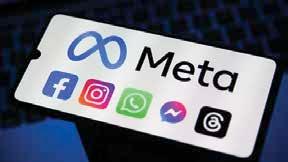
Meta opens the message
At its recent Conversations conference, Meta introduced new AI-driven features designed for businesses to enhance direct consumer marketing. The updates include expanded WhatsApp and Instagram integrations, along with collaborations with platforms such as Shopify and WooCommerce. These changes aim to help brands connect with broader audiences more easily, blending e-commerce with real-time interaction for greater engagement.
Customers agree experiential marketing makes them more loyal to a brand 40%

Racing
blockbuster lane
F1: The Movie,
Apple’s in-house film starring Brad Pitt, has seen the tech giant promote the feature film by tapping into its ecosystem. The tech giant used Wallet push notifications, Apple Pay ticket discounts, and even got co-star Damson Idris to drive an F 1 car from the film through Manhattan for the 2025 Met Gala, gaining additional viral mainstream attention from the stunt.
3 out of 4
Consumers buy from brands they connect with on values and identity


#NOT
MrBeast hits pause on AI
YouTube’s most-subscribed creator, Jimmy ‘MrBeast’ Donaldson, delayed the launch of his ViewStats AI tool suite following backlash from fellow creators. Critics argued that the tools, designed to generate thumbnails and captions from other creators’ content, could harm YouTube’s creator ecosystem. Donaldson acknowledged the concerns, withdrew the announcement and promised to refocus ViewStats on supporting emerging creators.

Merck has appointed RICOLA FURTADO as Head of Communications and Policy for its Gulf cluster. The appointment aims to support the Germanheadquartered science and technology company’s commitment to advancing a more strategic, integrated approach to communications and public affairs in the region. Furtado is responsible for shaping and executing an integrated communications strategy across the Gulf region. Her role spans external and internal communications, media relations, advocacy and policy initiatives.

Mercedes-Benz Cars Middle East (MBCME) has restructured its leadership bench, with a series of appointments. The transition includes the appointment of BONNIE AL-FAKHRI as Head of Marketing and Communications. Her experience and deep understanding of cross-regional dynamics promises to elevate collaboration across markets, sharpen strategic focus and drive Mercedes-Benz General Distributor’s global marketing evolution while reinforcing global brand alignment.
Additionally, PABLO SOUTO, the current Director of Network Development and Online-to-Offline, will oversee marketing operations. He has been

tasked with improving the customer journey by driving cohesive, data-driven brand experiences across both physical and digital touchpoints.
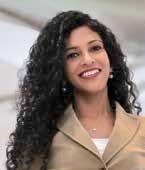
UAE hospitality brand JA Resorts and Hotels has appointed SHANADI LIYANAGE as Cluster Director of Marketing. Liyanage brings a creative edge to brand positioning, strategic planning and innovative storytelling within the luxury hospitality space. She is known for her ability to connect effortlessly with people from all walks of life and has worked with renowned names such as The Dubai EDITION, as well as several other five-star lifestyle hospitality concepts.
global expertise along with a nuanced understanding of the regional market to the team and marks an exciting chapter for the luxury hotel brand.


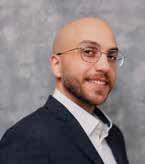
Sharjah Golf & Shooting Club has appointed ELIAS SABELLA as Director of Digital Marketing to build a consistent, engaging brand presence that shines a spotlight on every corner of the Club. The appointment comes as a result of the leisure and sports club recognising the need for a unified, dynamic digital and marketing strategy to fully showcase its unique offerings and reconnect with both loyal members as well as new audiences.
Shangri-La Dubai has appointed ANITA DRAHOS-NAMBIAR as Director of Marketing and Communications. The appointment aims to signal an exciting new chapter for the hotel as it looks to continually evolve its brand presence and guest experience in the competitive luxury landscape. Shangri-La Dubai said Drahos-Nambiar brings
Horizon FCB Dubai has named ALEX PINEDA as its new Chief Creative Officer. The appointment comes as the agency sharpens its focus on delivering work that combines creativity fuelled by data and technology to build brands that endure. With more than 20 years of work experience in the Middle East, Europe and Latin America, Pineda’s track record includes work in different industries like quick-service restaurants (QSR), automotive, banking, FMCG, tourism and real estate among many others.
Independent creative marketing agency, JWI, has promoted BENJAMIN THOMAS to Creative Director, marking a key development in the agency’s leadership team as it strengthens its position in the Middle East market.
Thomas joined JWI in 2017 as the agency’s first in-house designer.
In his new role, Thomas will lead JWI’s creative output – with a focus on bold, creatively brave and impactful work, fostering a culture of mentorship, and integrating the use of emerging technologies to elevate the agency’s ability.
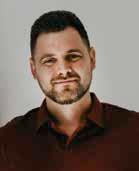

Those with a keen eye on news and advertisements – or, should we say, errors and mistakes within media and marketing – sent in a couple of interesting submissions to The Spin this month.
Several of these submissions, unfortunately, appear on the front page of local news titles, so we’ve reserved the top spot for them on the last page of this edition.
Kicking things off in big, bold font is an inescapable typo on the

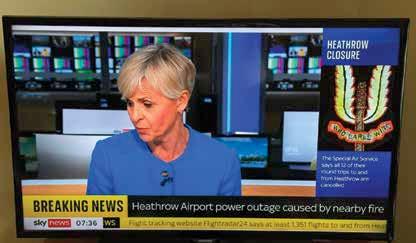
front page of the Norwich Evening News. Looks like the headline either made the front page in a hurry or the sub-editor might have called in sick on 10 June.
Funnier still, we have a typo on the front page of the Irish Examiner that might have escaped notice if it were anything but the name of a certain UK Member of Parliament – who remains quite unpopular in Ireland. Let us know if it tickles you when you read it aloud.
Meanwhile, in what seems to be quite the coincidence, Indian newspaper Mid-Day ran a Daddy’s Day Out ad by KidZania on its front page, which was prepared well in advance, to advertise an aviation experience for kids. The coincidence: The ad, which shows a portion of an Air India plane popping out of a building, was featured on 12 June – the same day an Air India plane crashed into a building in India.
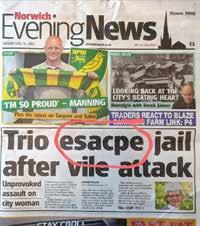
Note to creatives: Maybe, next time avoid any associations between planes and buildings?
Speaking of aeroplane-related mishaps in the media, Sky News and The Guardian went live with a howler during their coverage of the Heathrow airport closure. They reported that the British Army’s Special Air Service (SAS) cancelled 12 flights to and from Heathrow. However, it was Scandinavian Airlines System (SAS) that actually cancelled its flights.
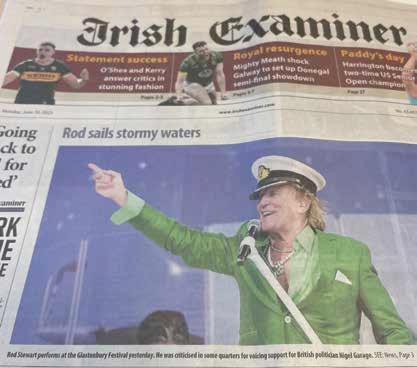


On a a Facebook post, the latter SAS had a field day, saying: “We get it, Sky News and The Guardian – [we both have the] same initials, both wear uniforms, operate internationally and move fast.”
What better way to advertise ways to “Make You Fluent” than to destroy the language with an ad that reads: “Say Goodbye to Fear of Speaking New Language. We are looking for 10 volunteers who need to start speaking
new language this month. No matter what.” If you think about it, what’s the point of great copy, if the target audience doesn’t understand it anyway?
We wind up this edition of the The Spin with an AI-generated Sciatica ad that seems more like a wind up. Is there a better way to get rid of the pain than chopping off the parts of the body responsible for it?
NEW:
NEW:


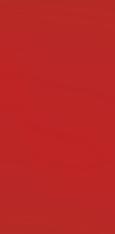
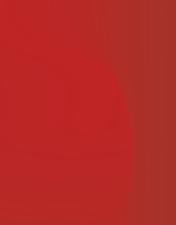


Integrated
Production

Outstanding

